
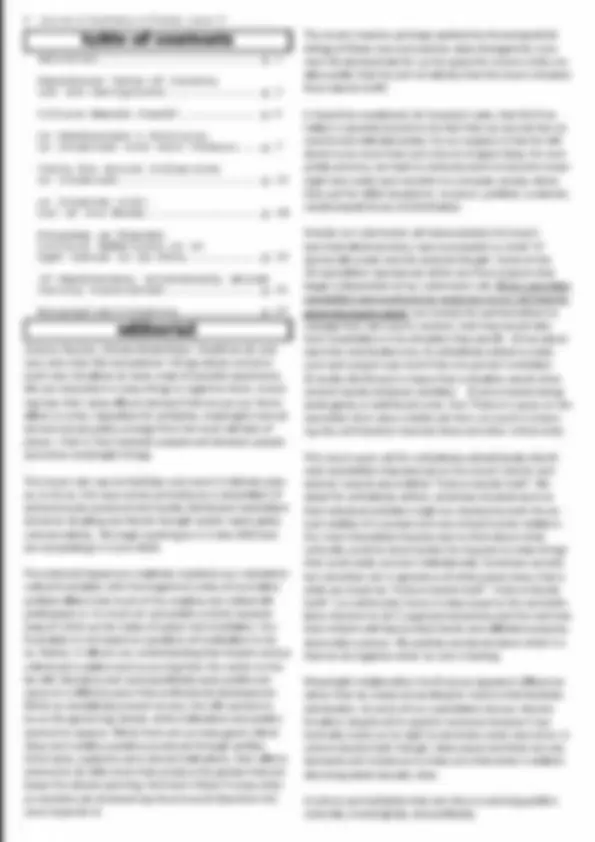
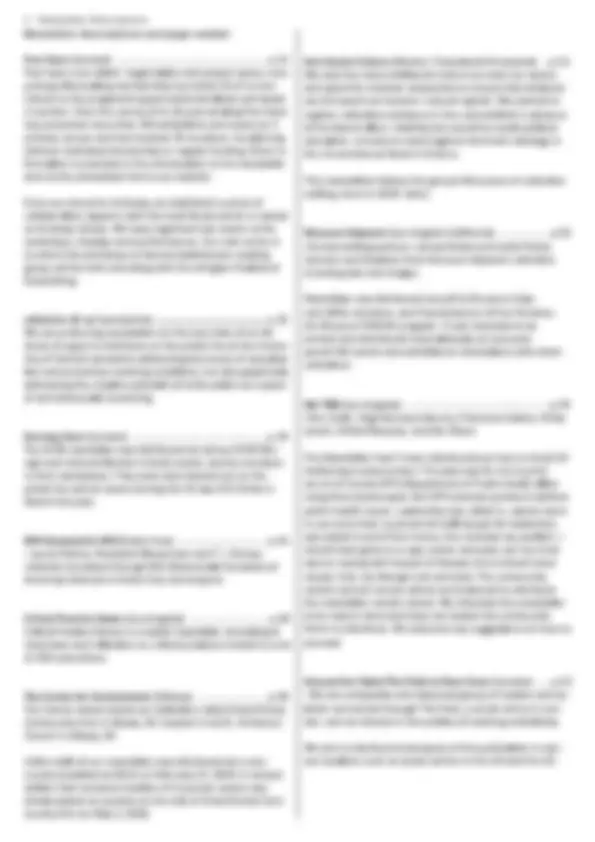
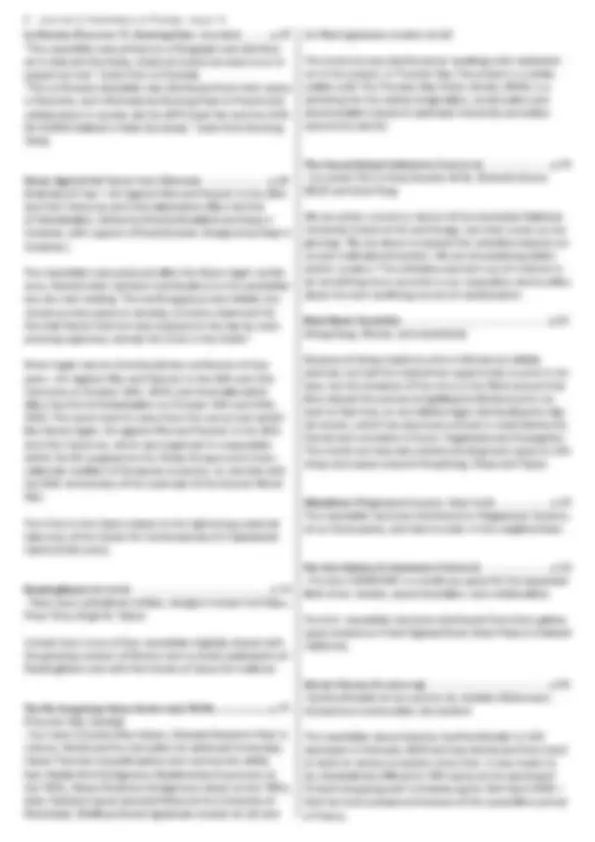
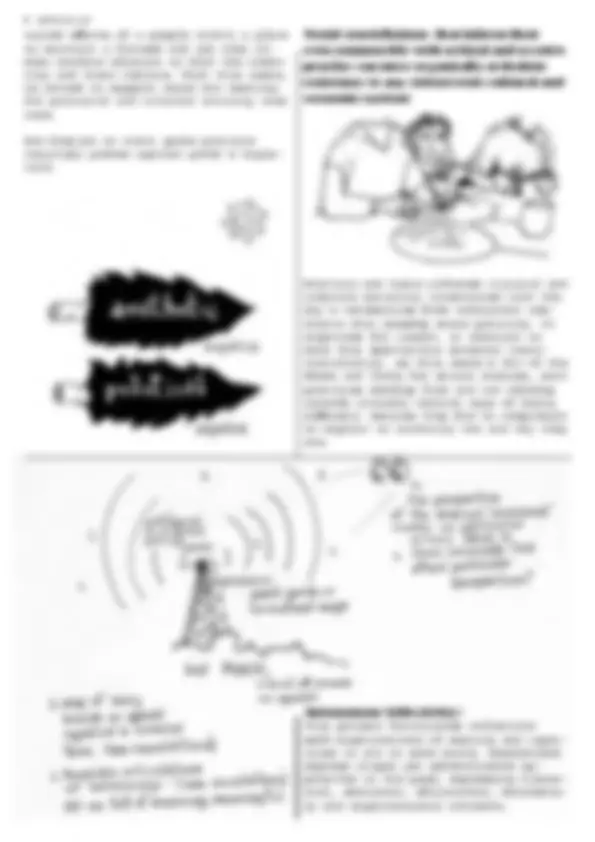
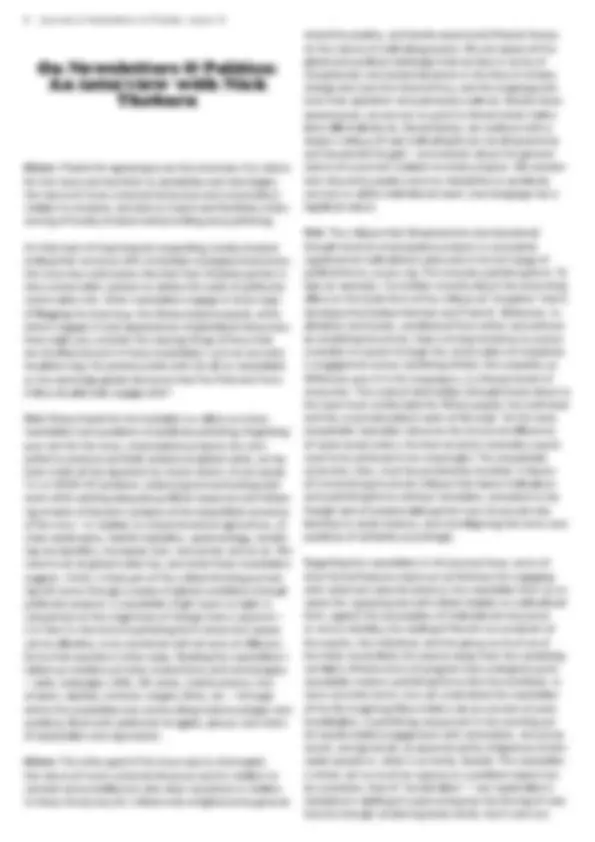
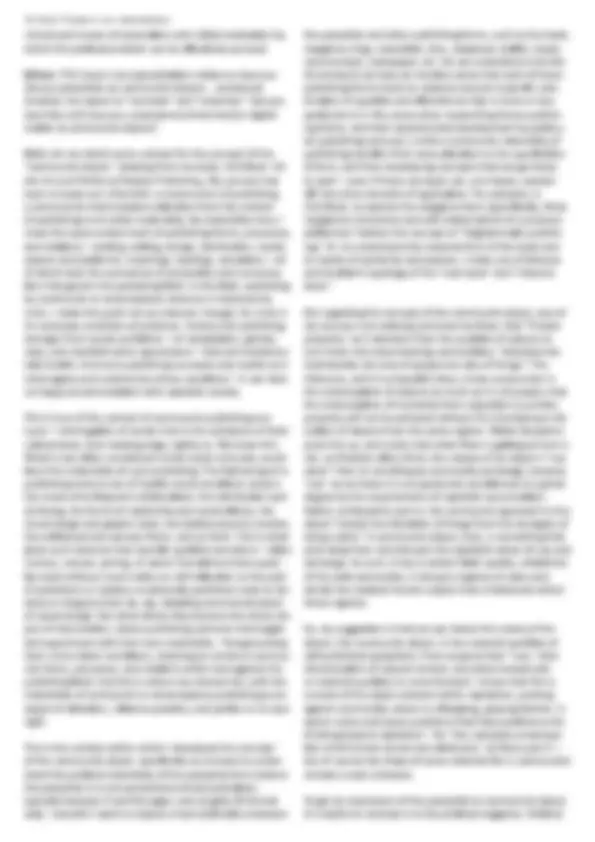
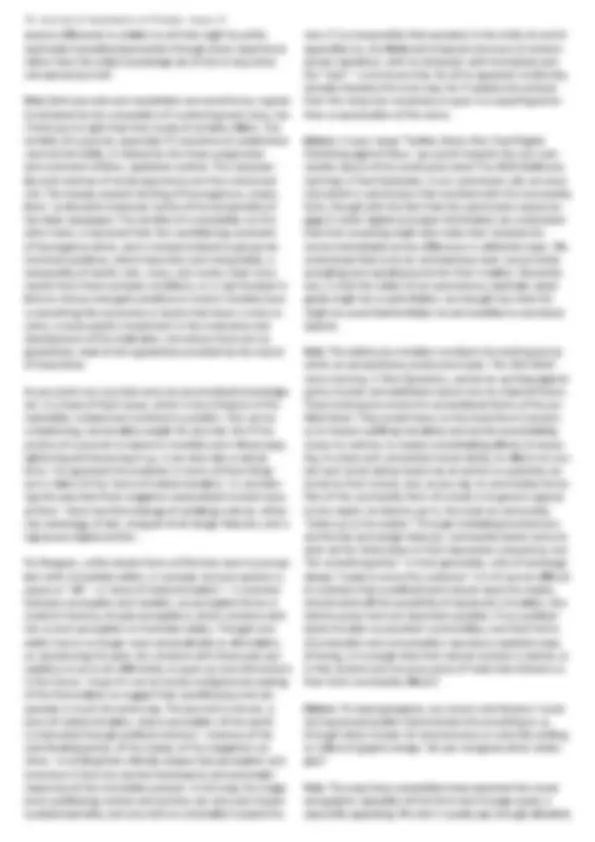
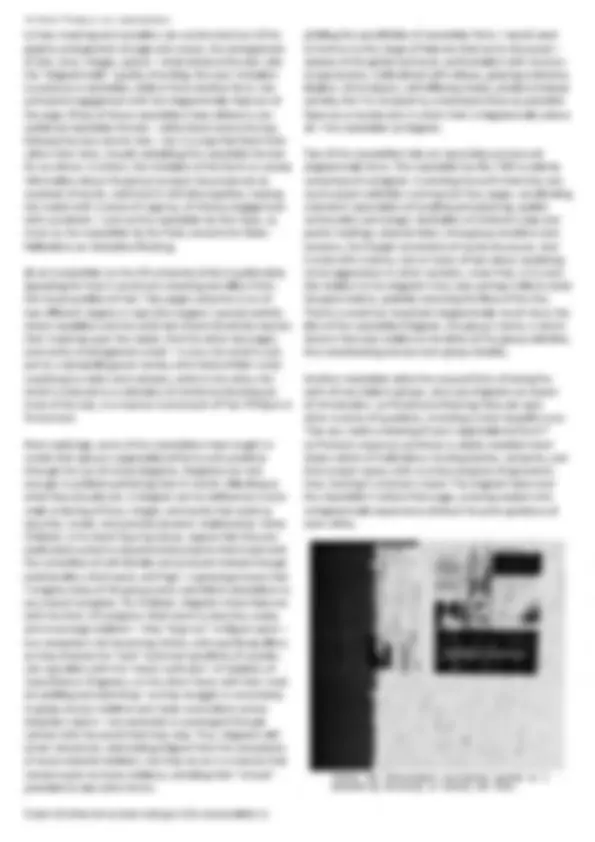
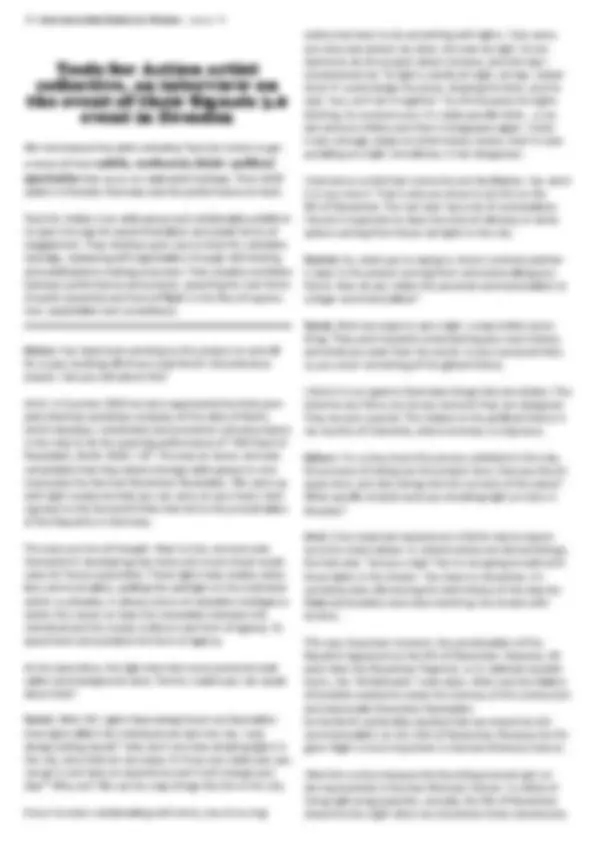
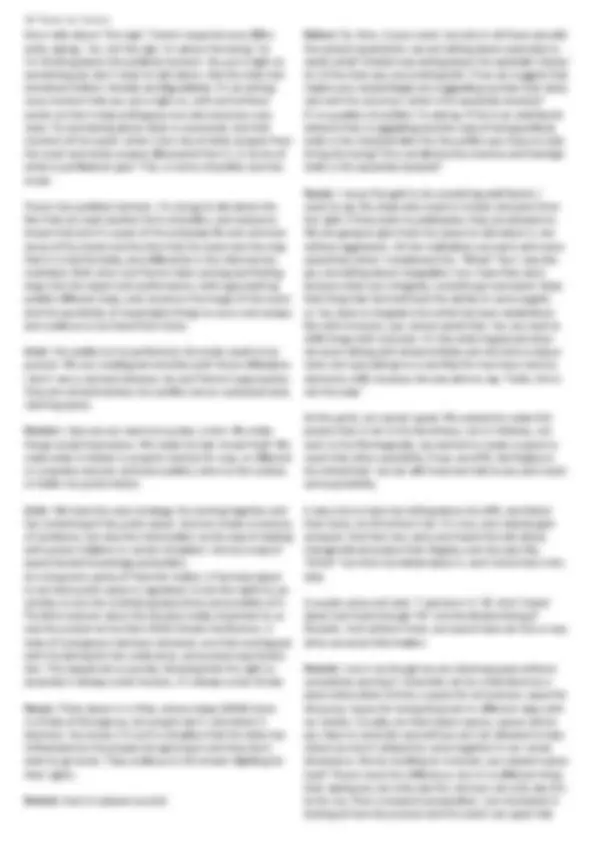
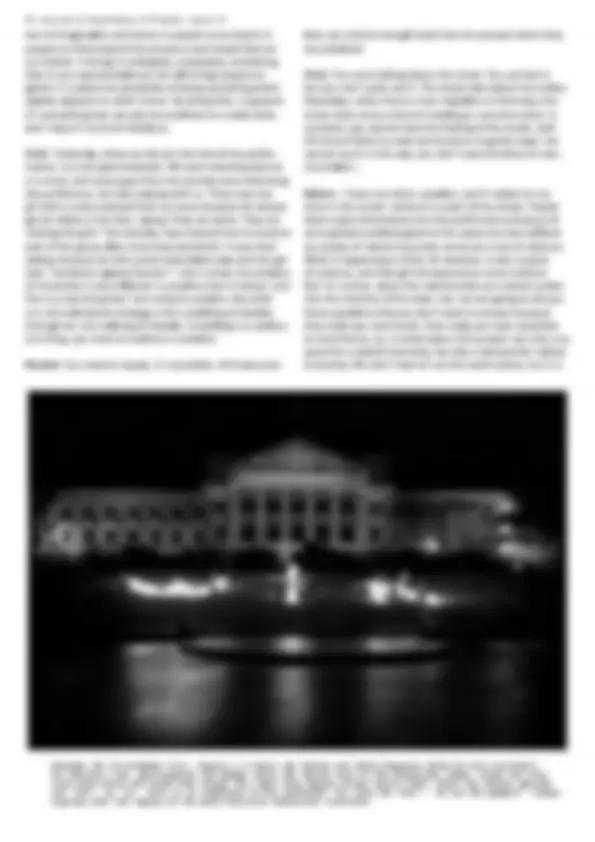
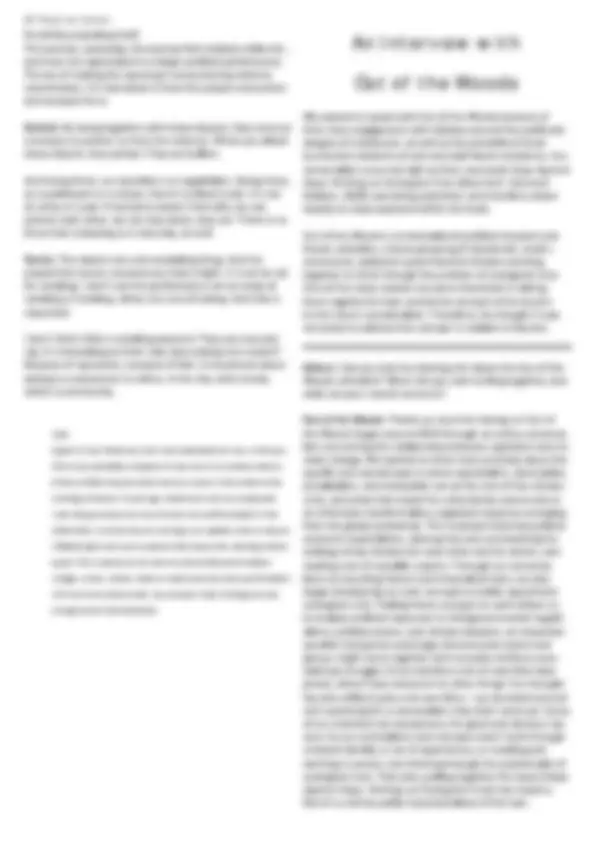
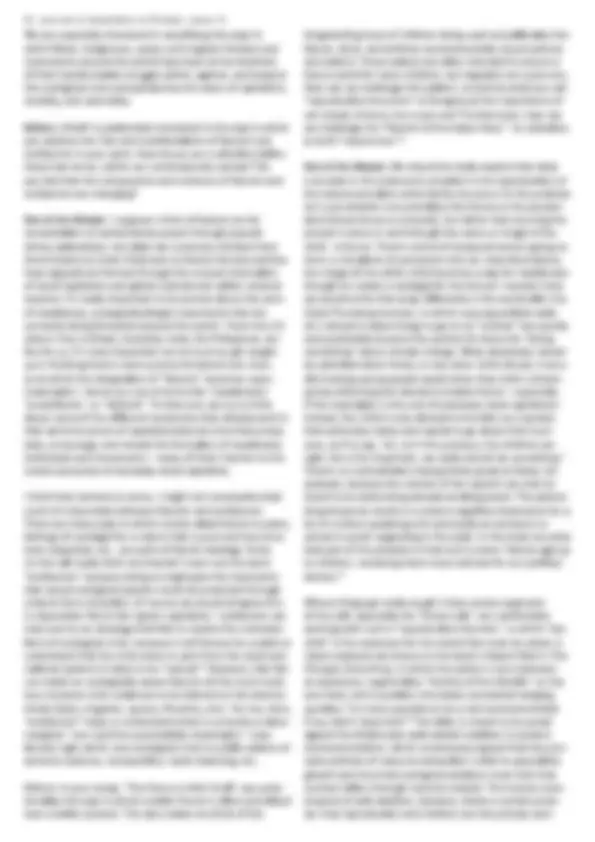
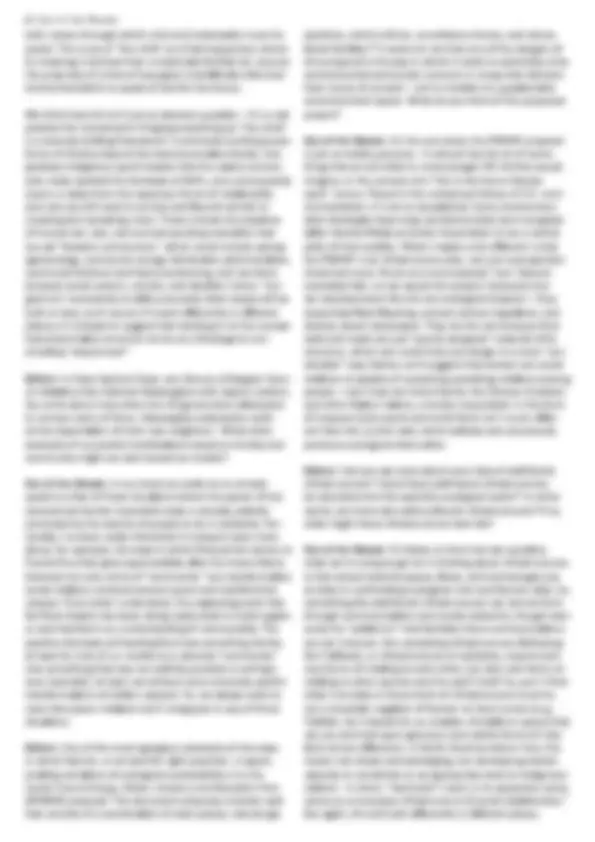
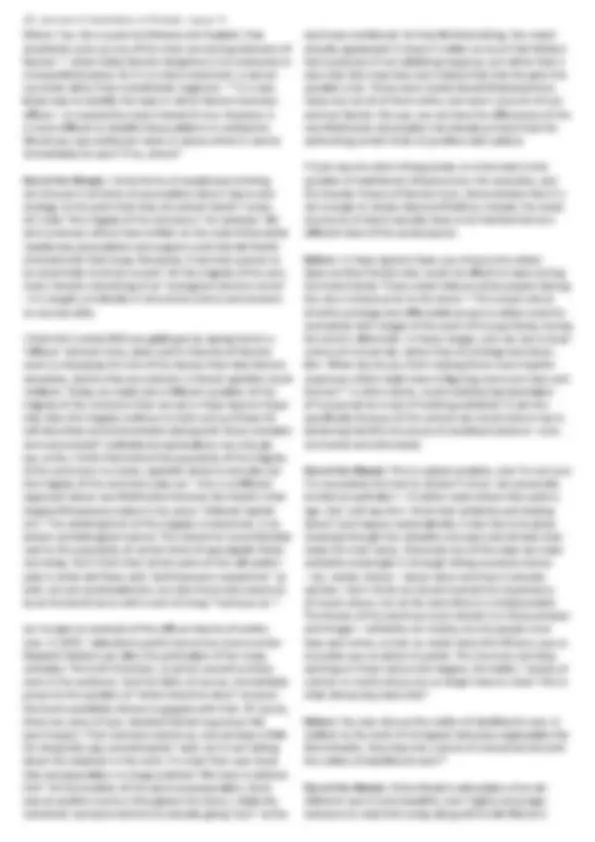
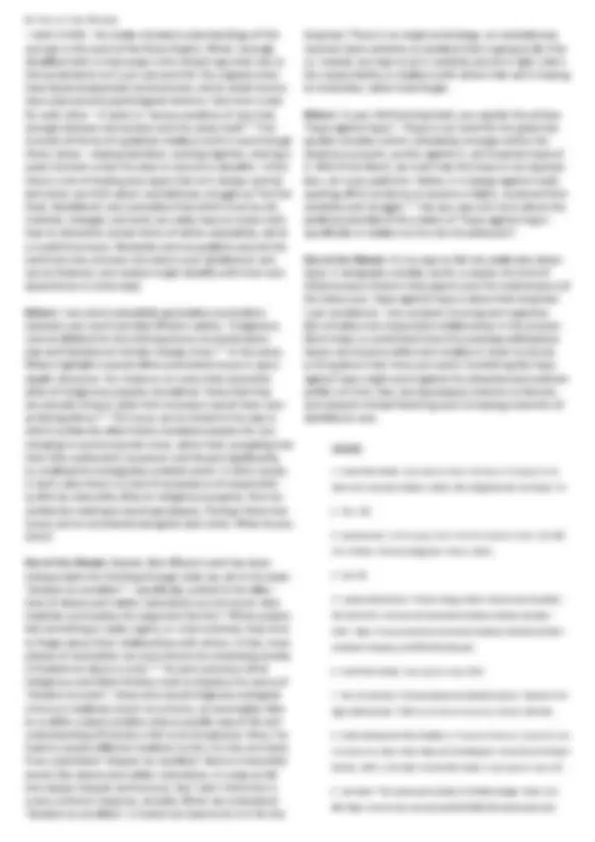
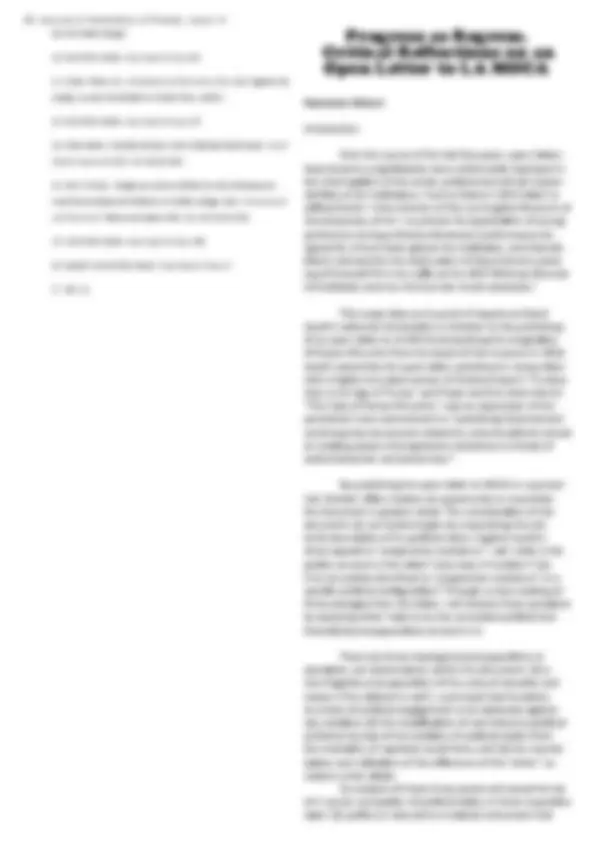
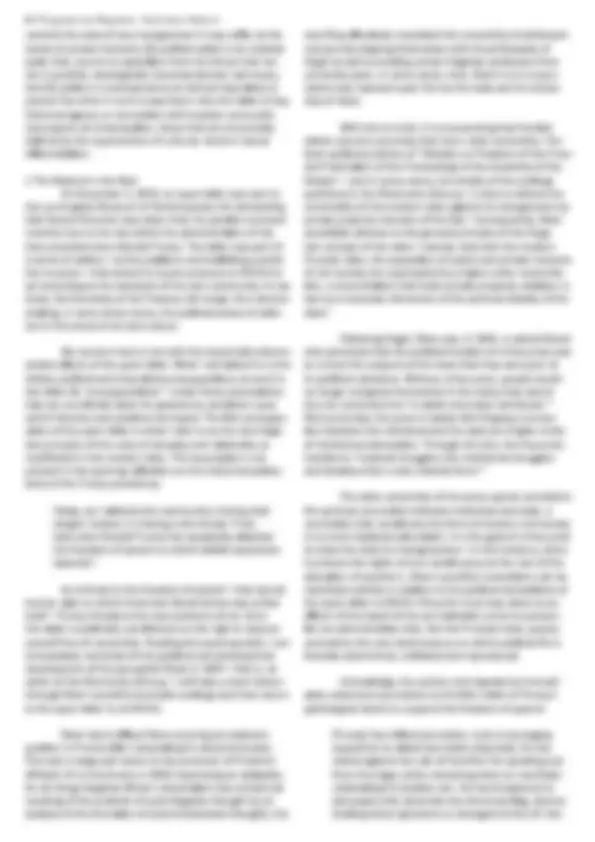
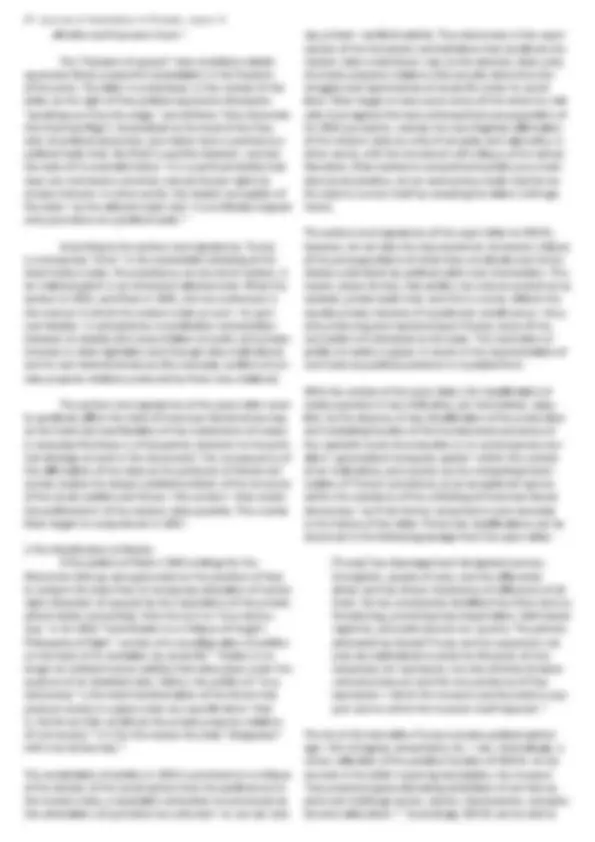
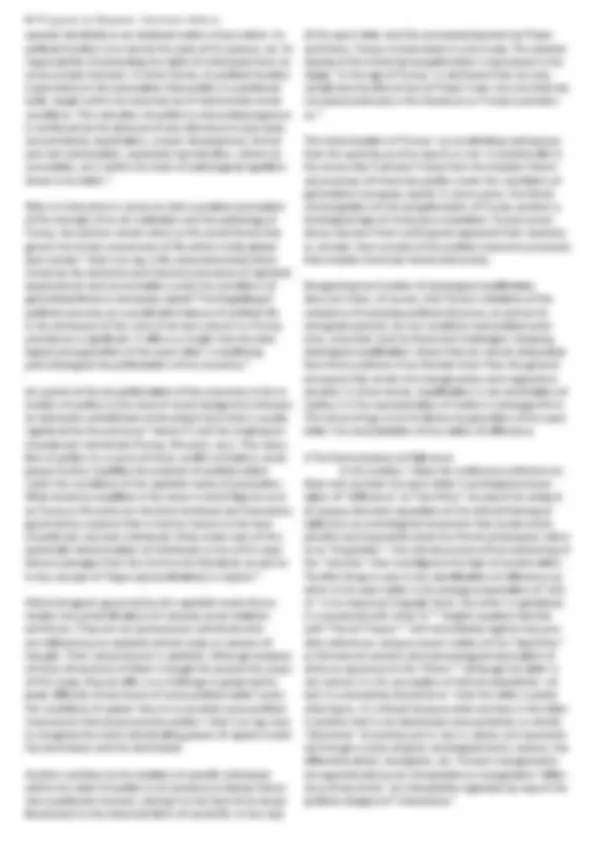
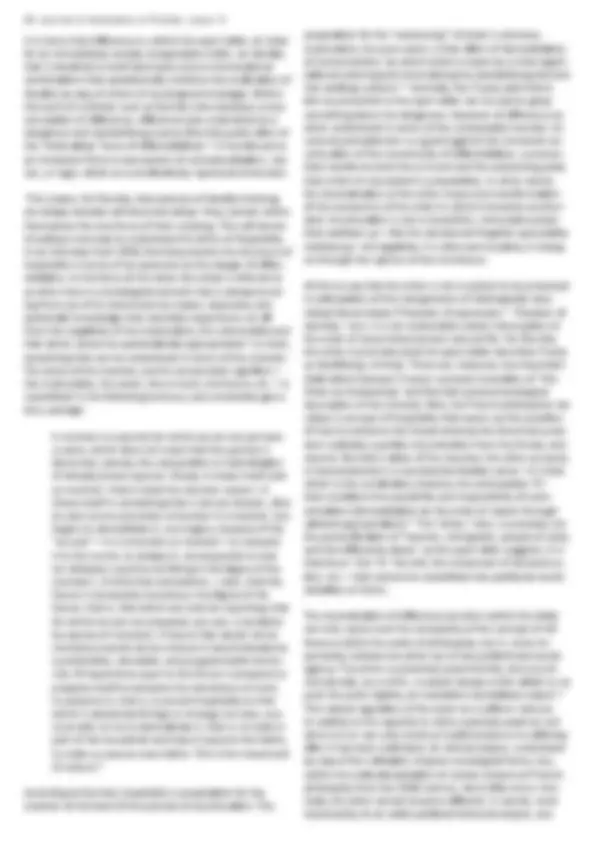
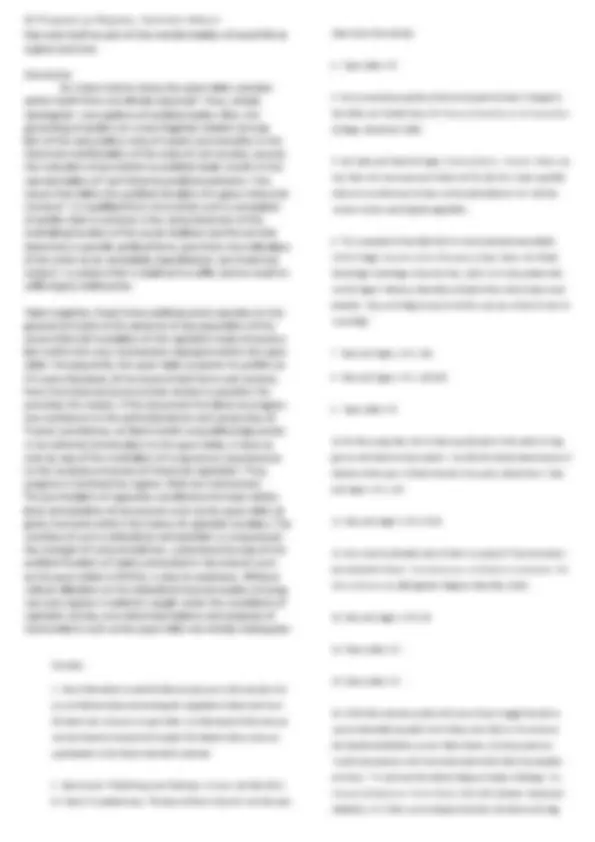
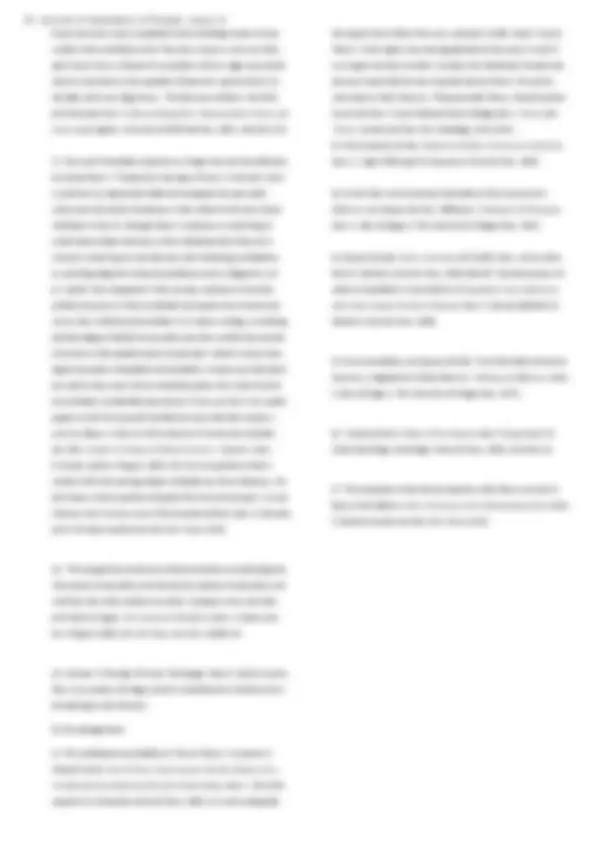
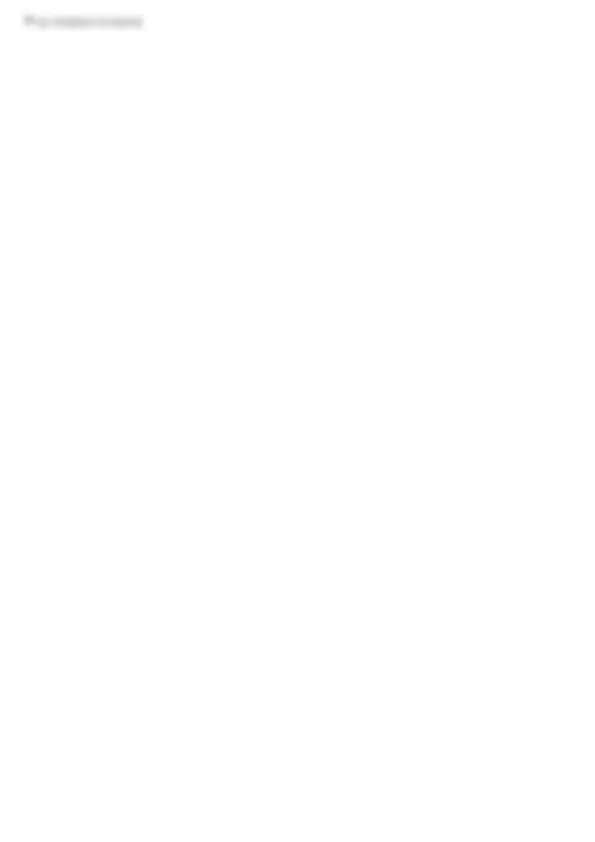
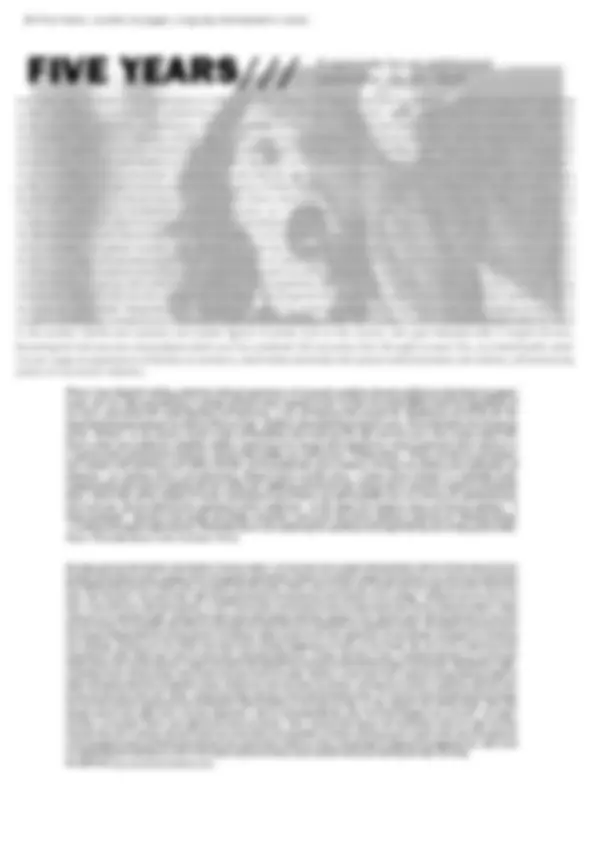
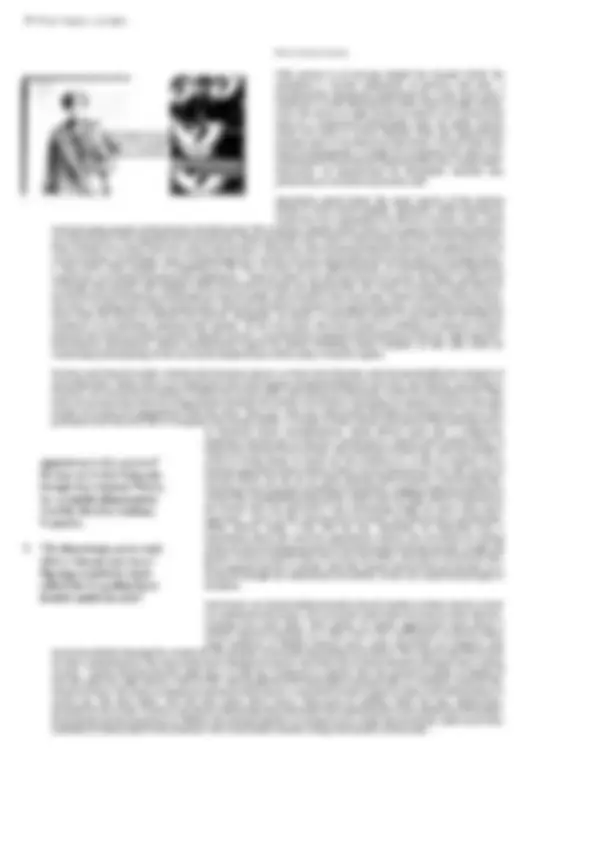
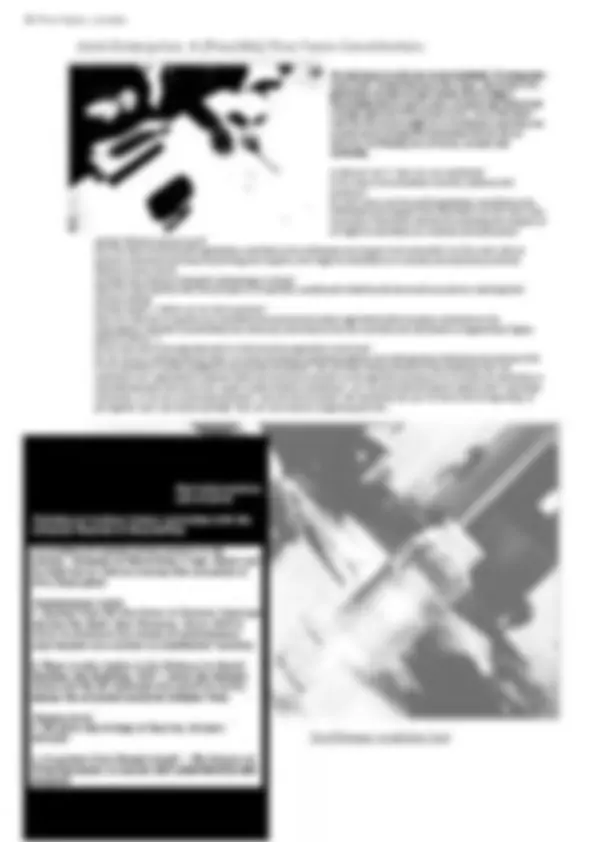
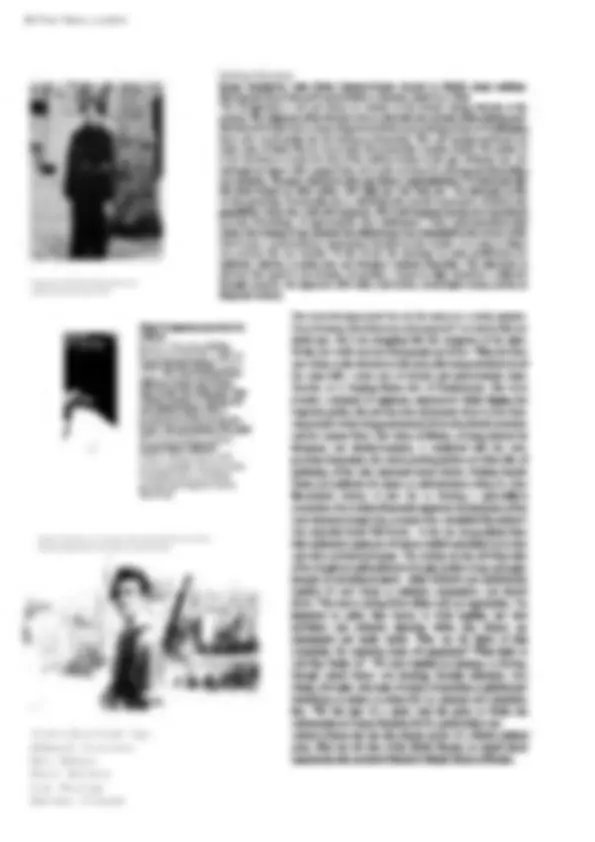
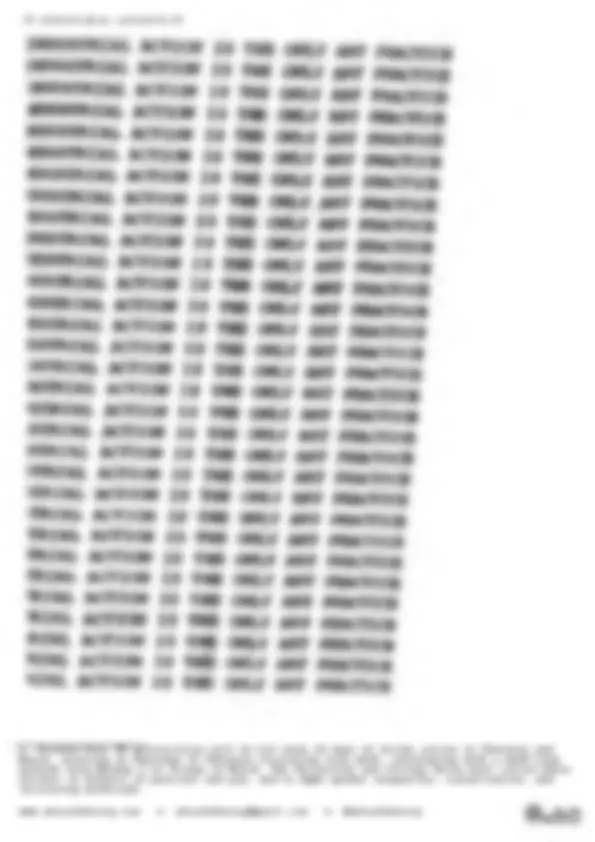
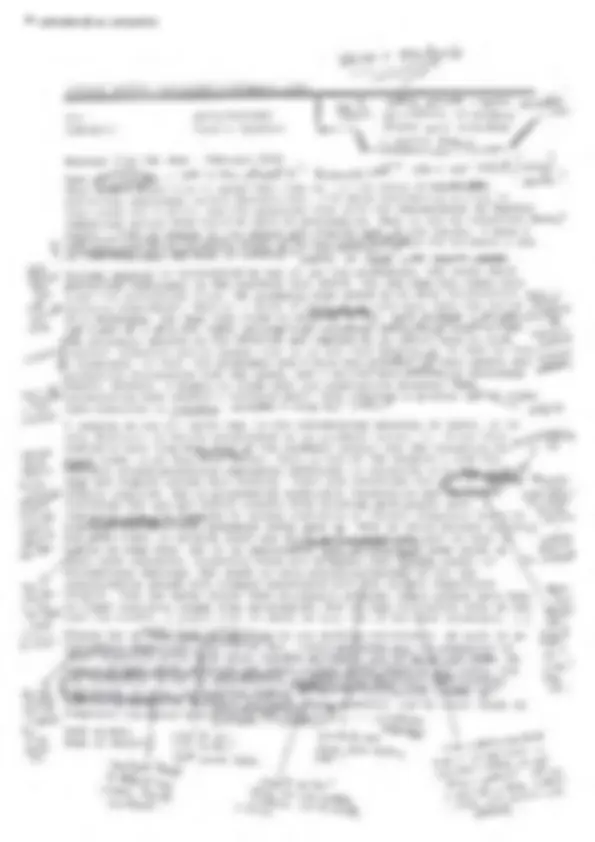
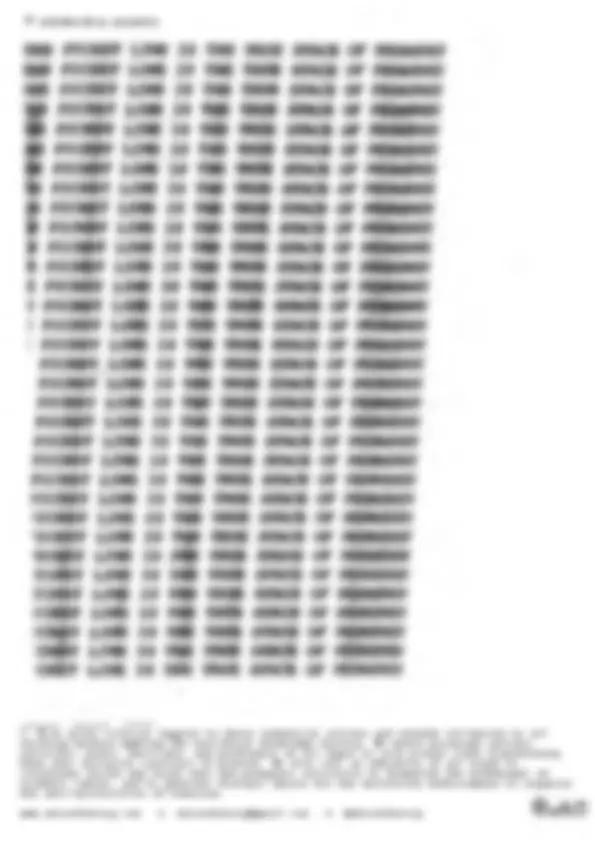
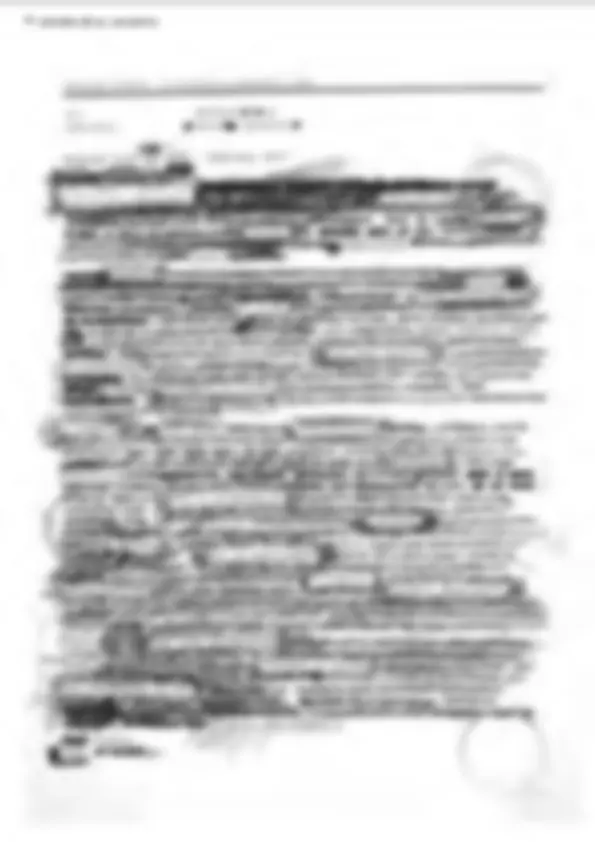
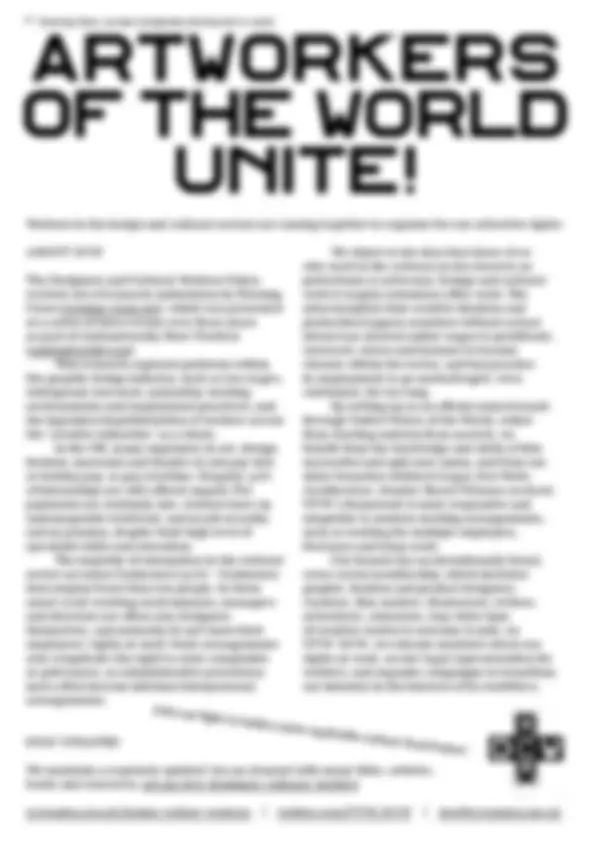
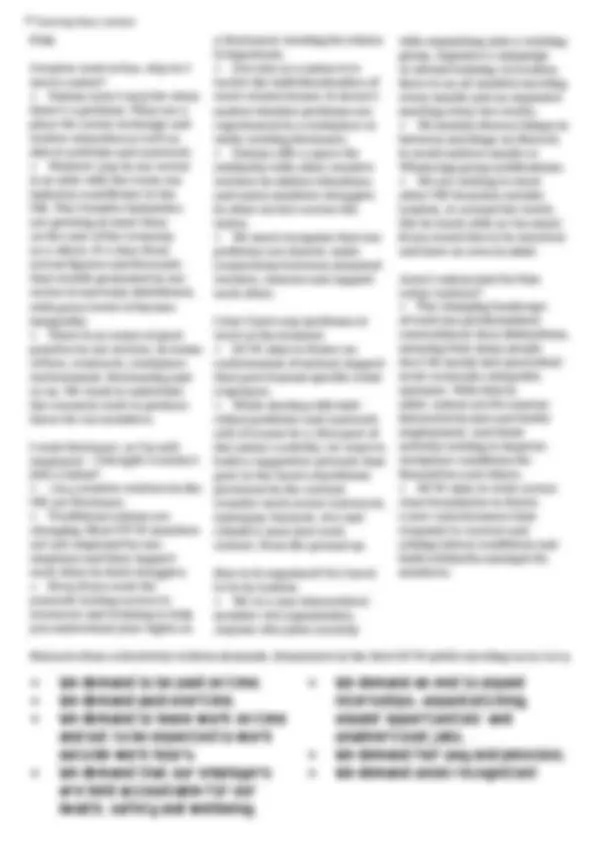
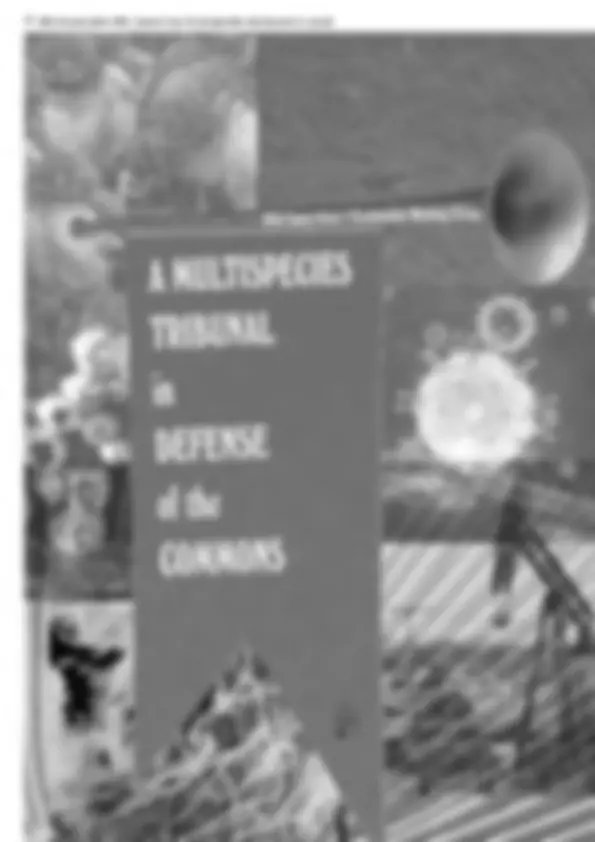
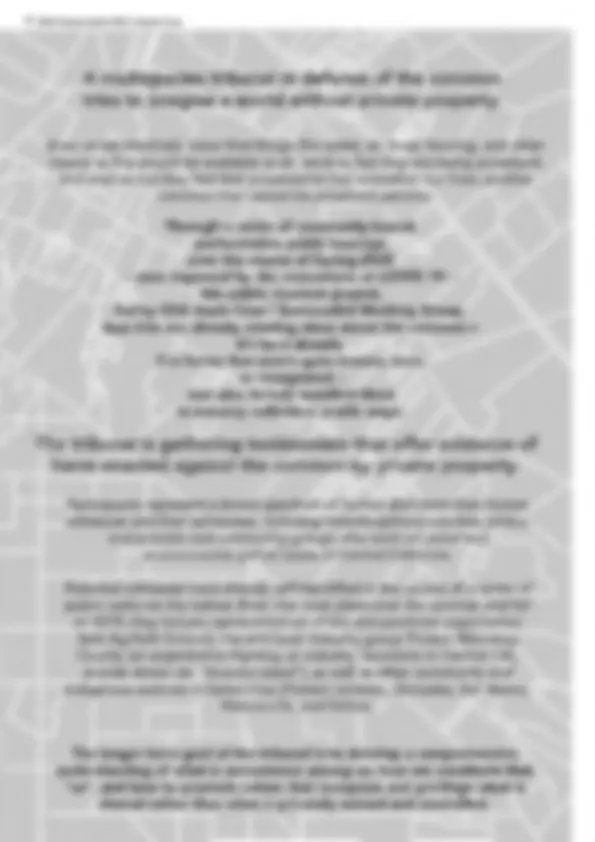
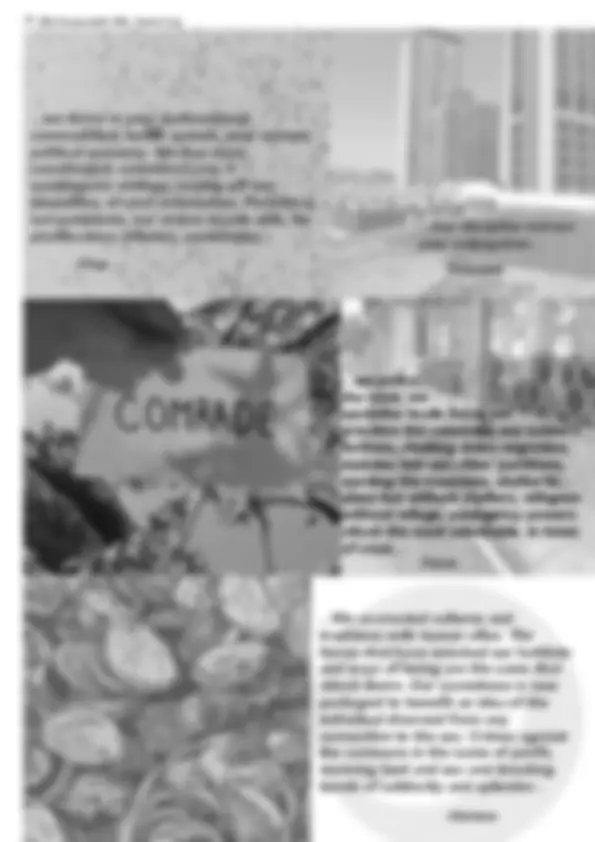
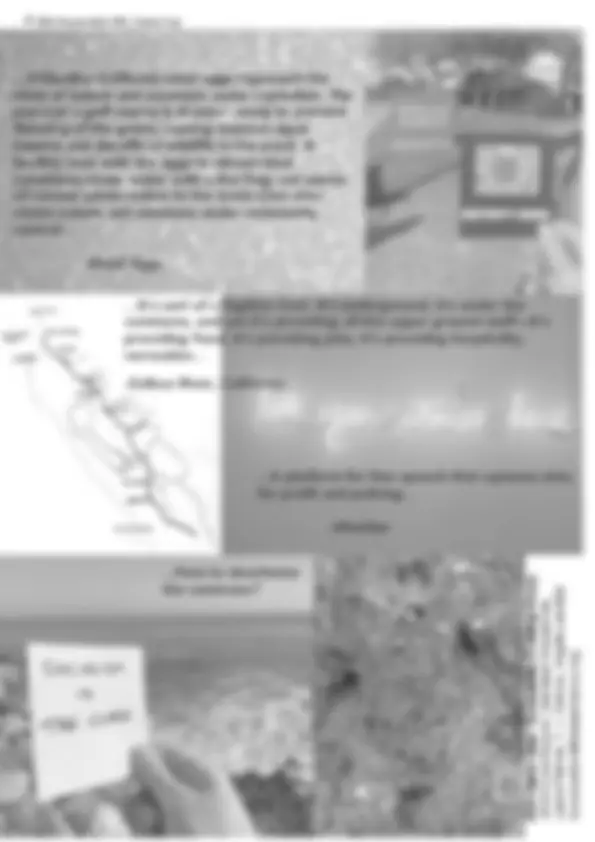
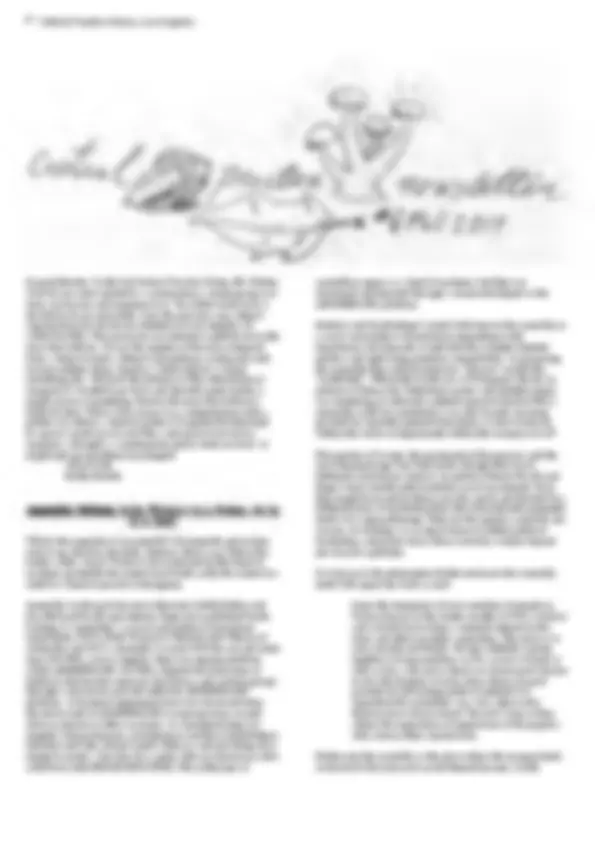
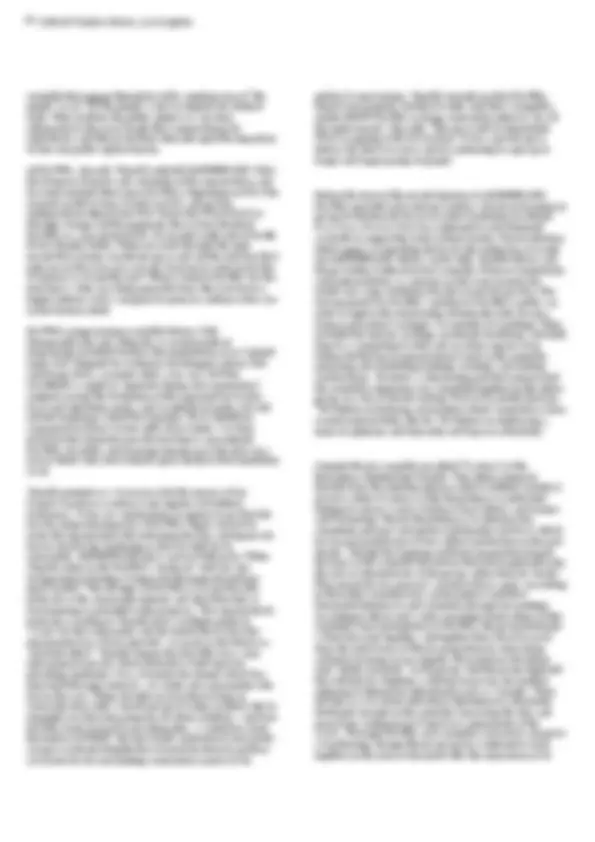
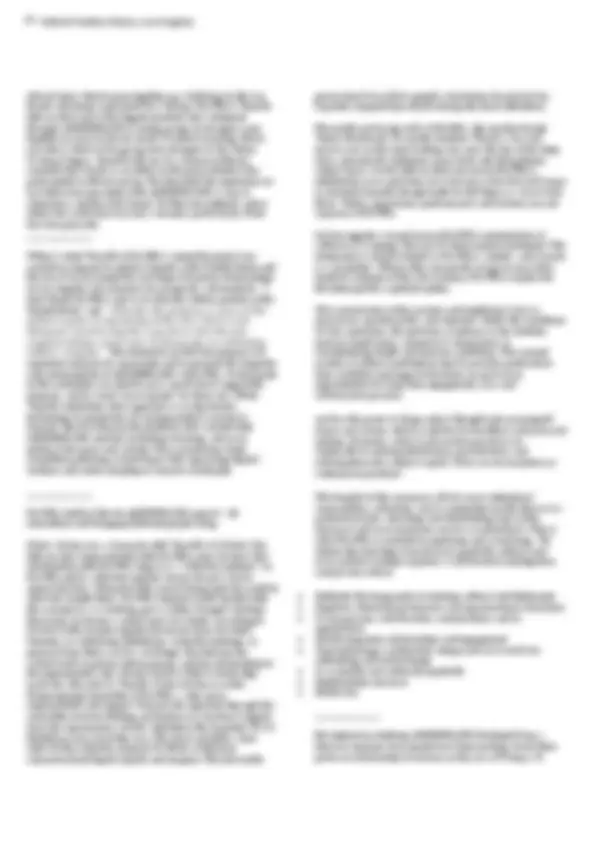
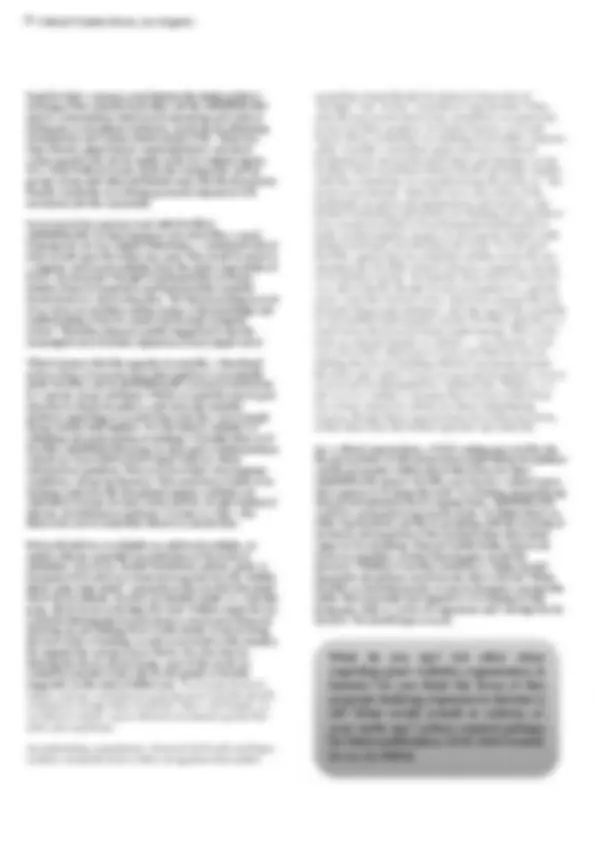
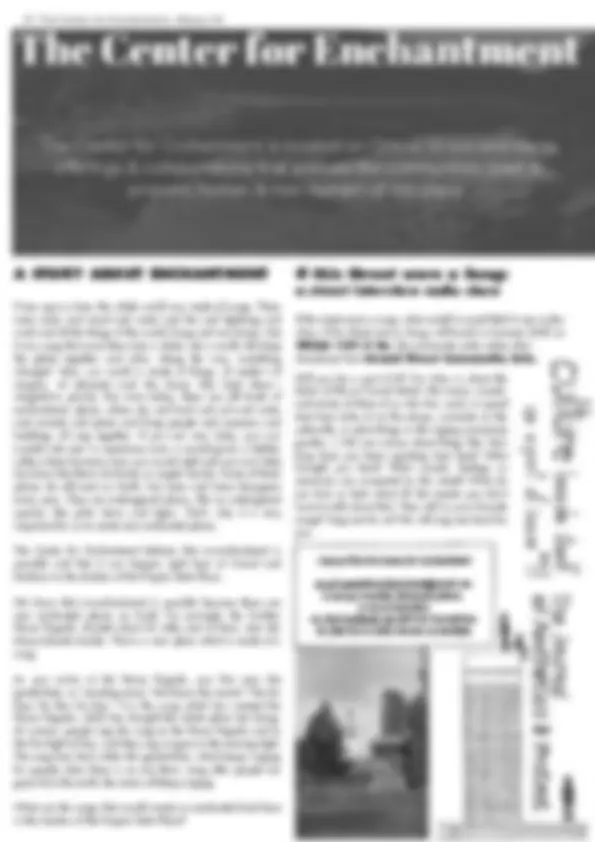
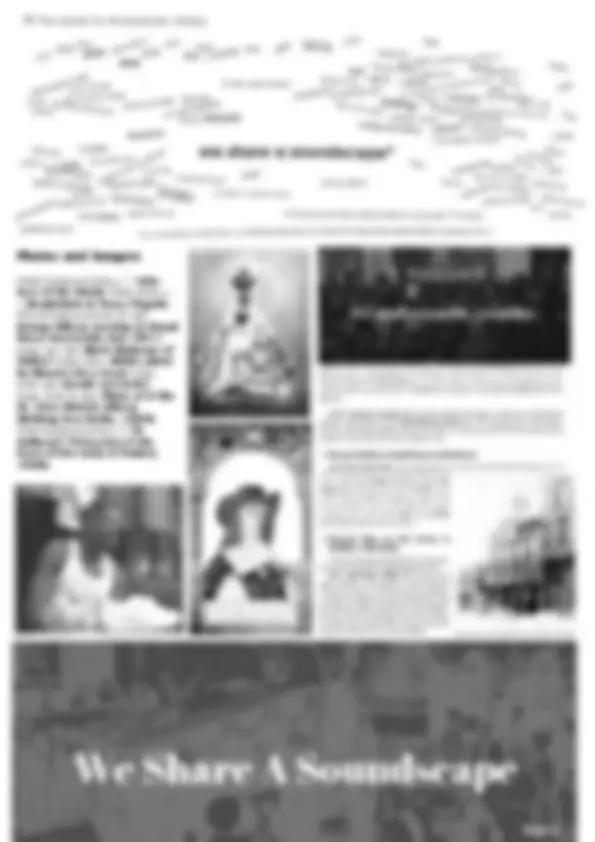
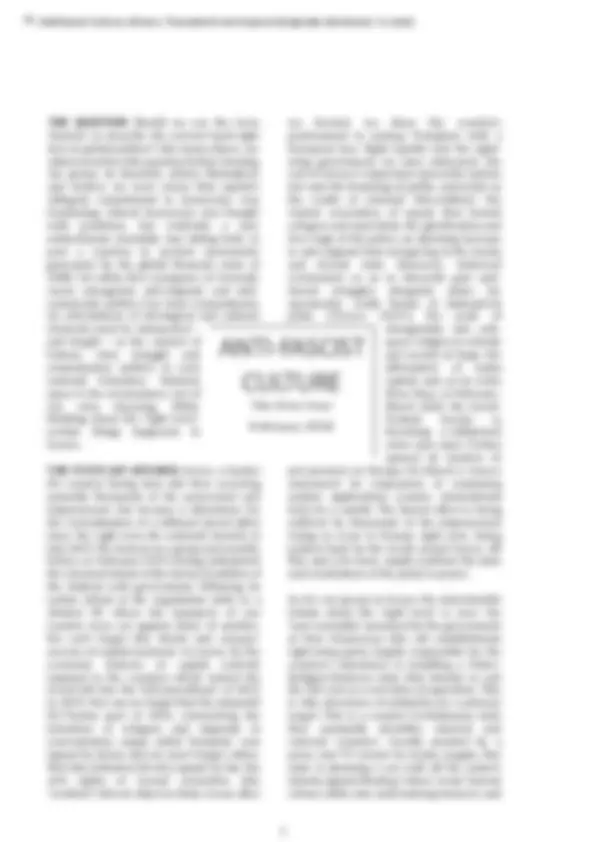
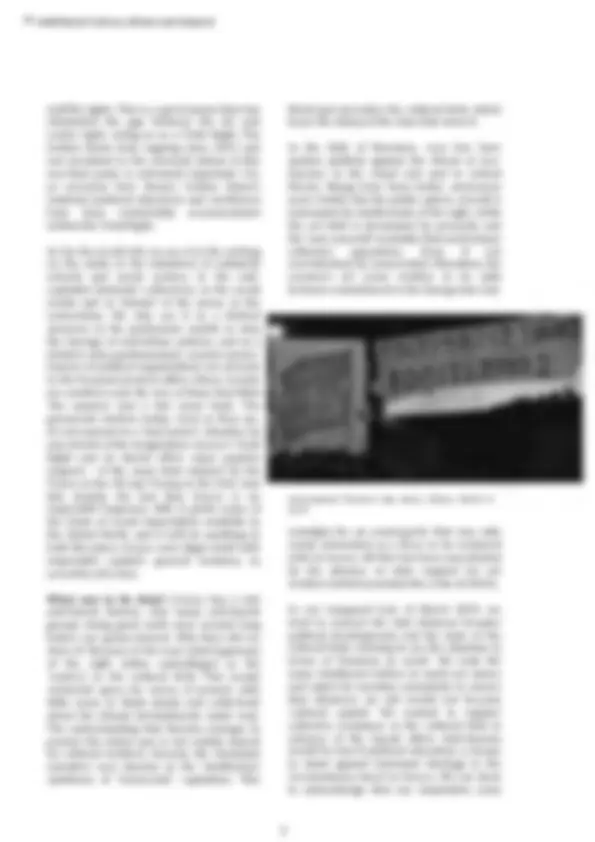
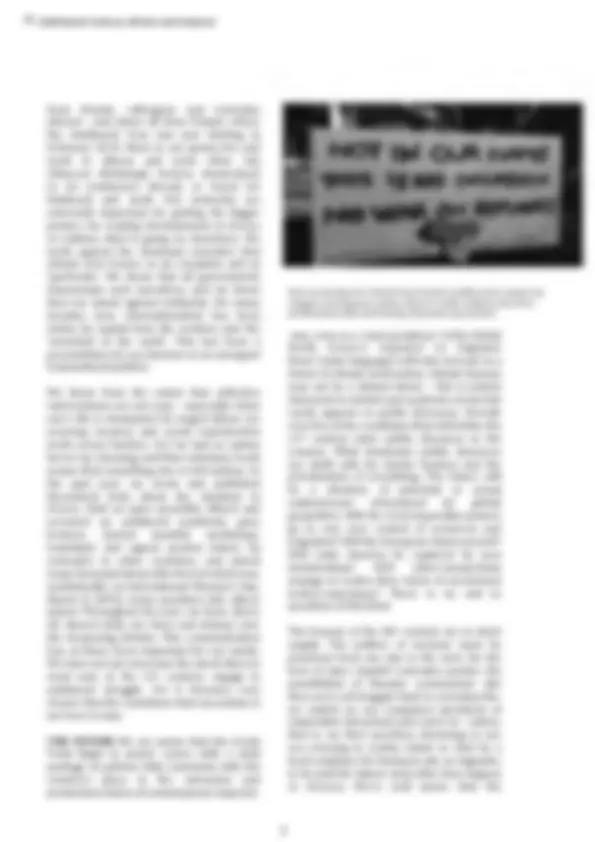
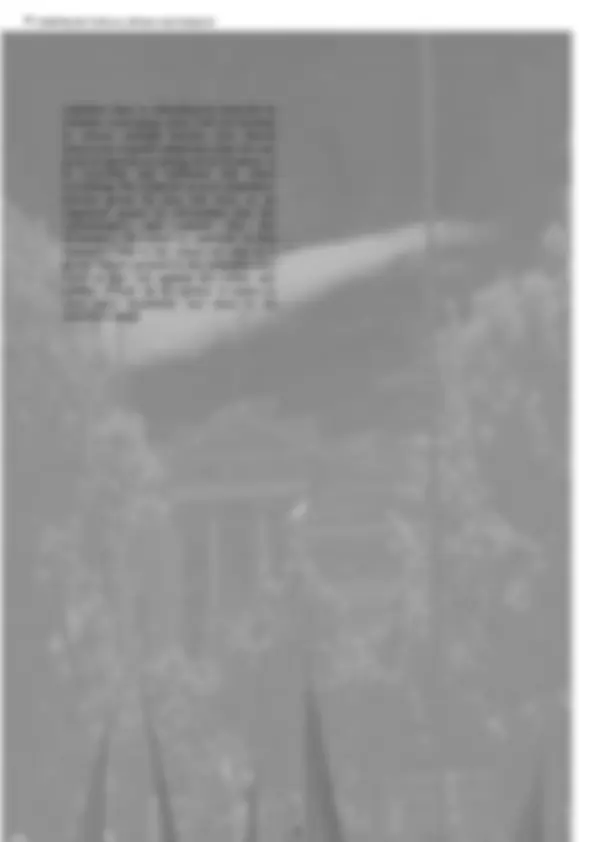
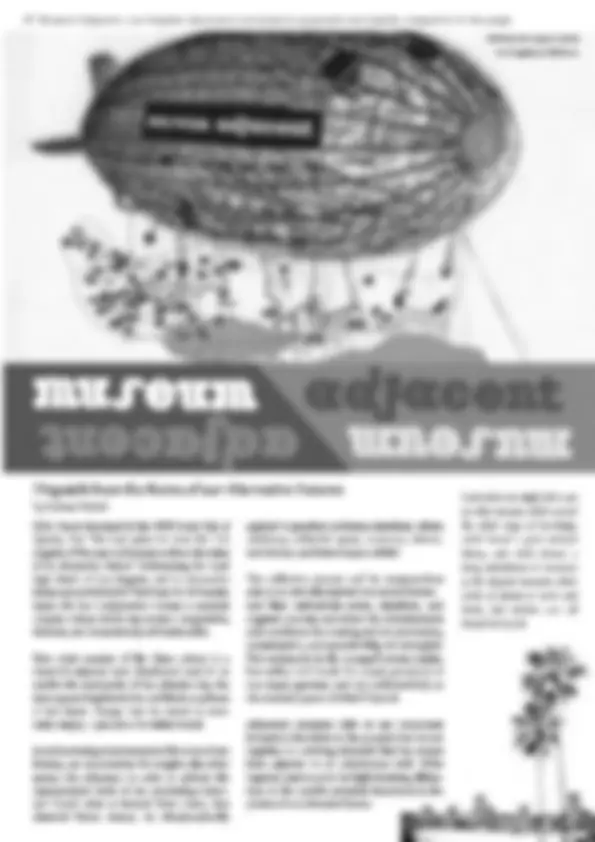
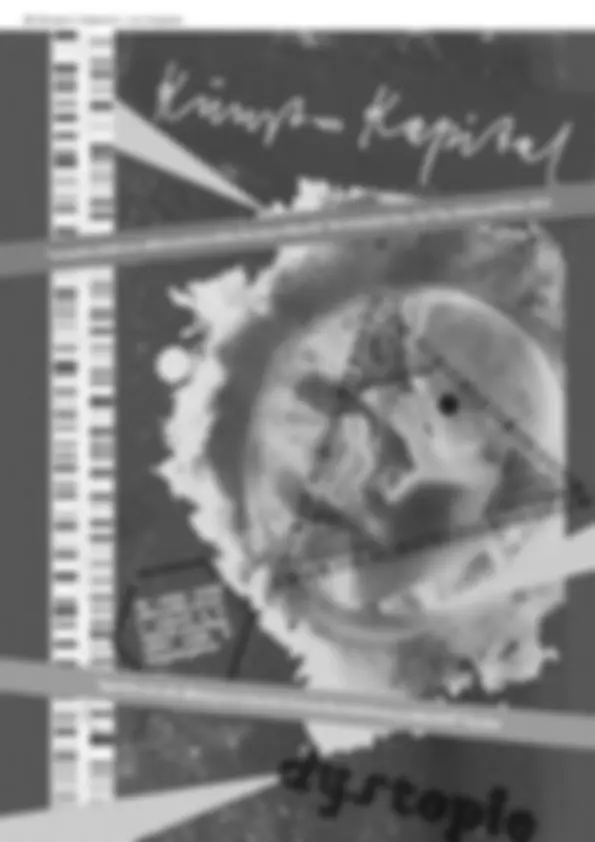
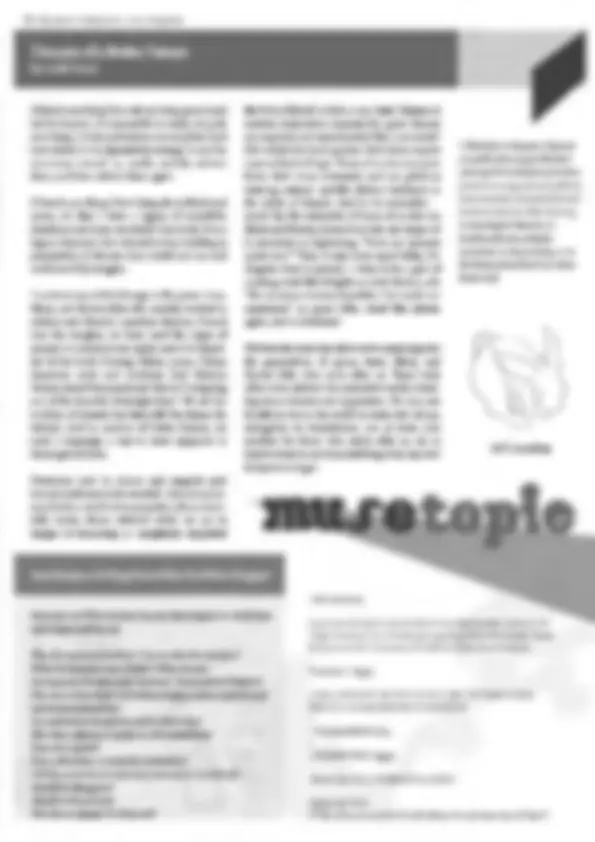
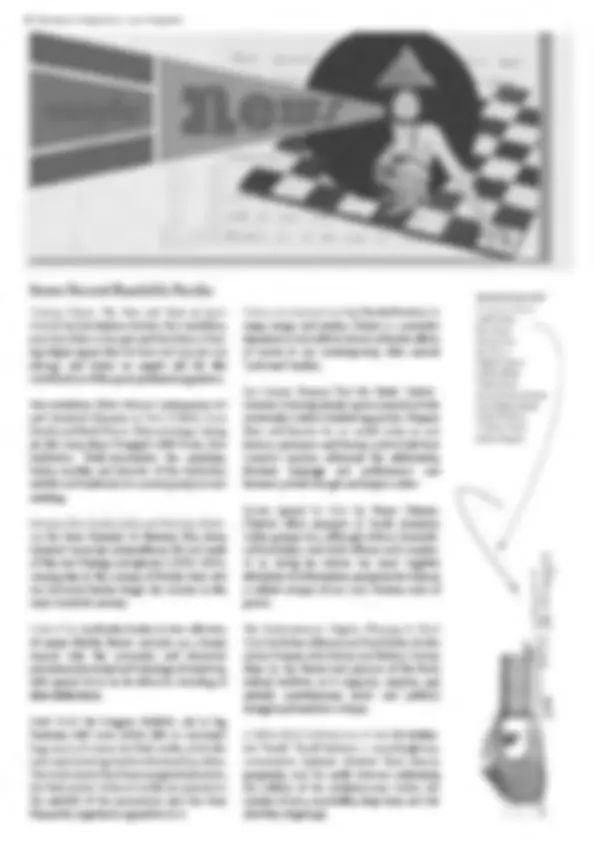
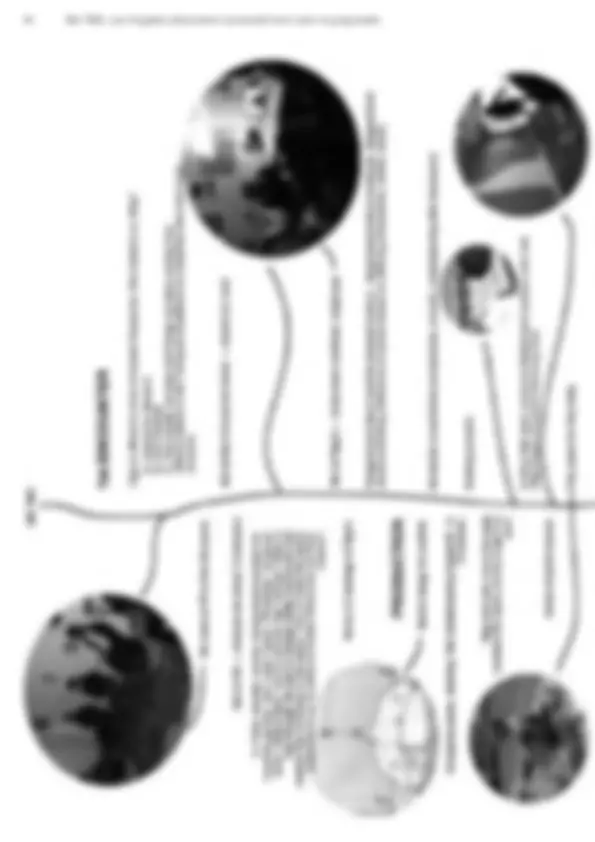

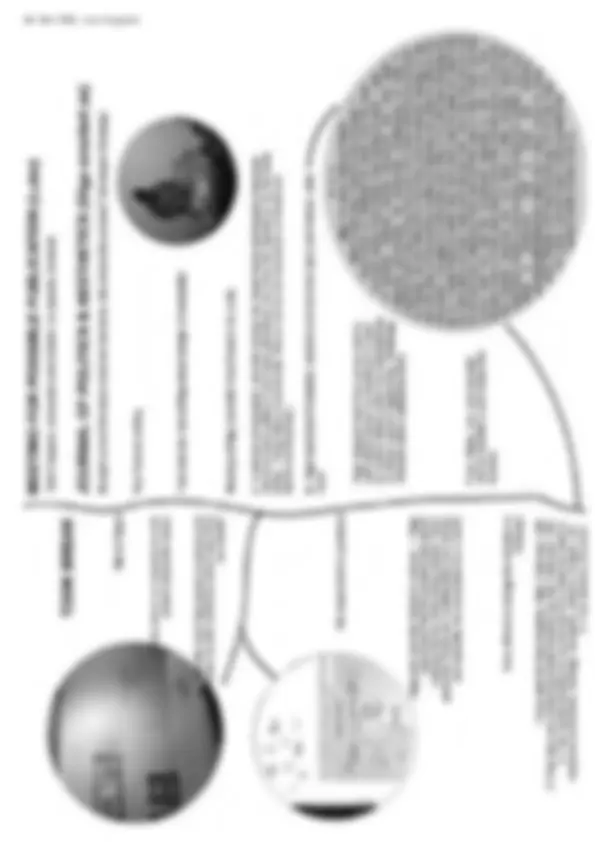
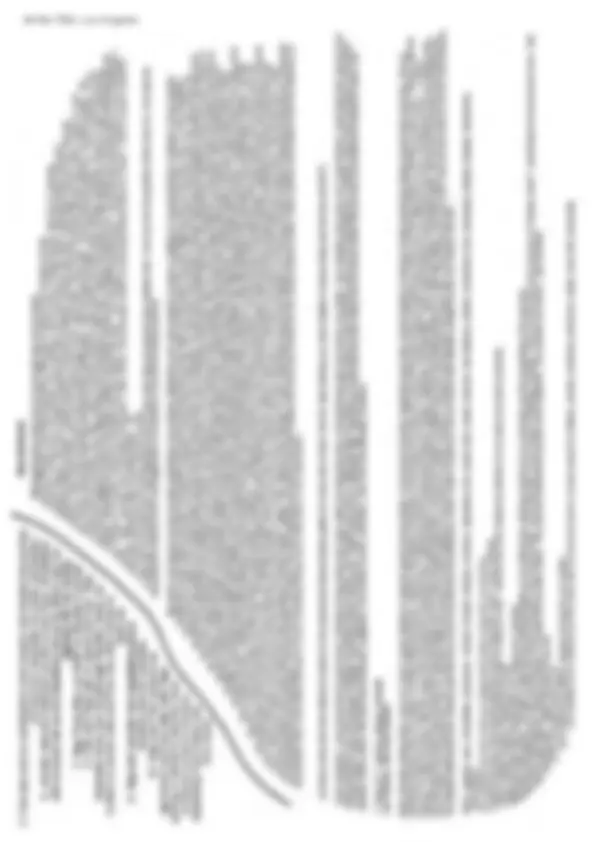
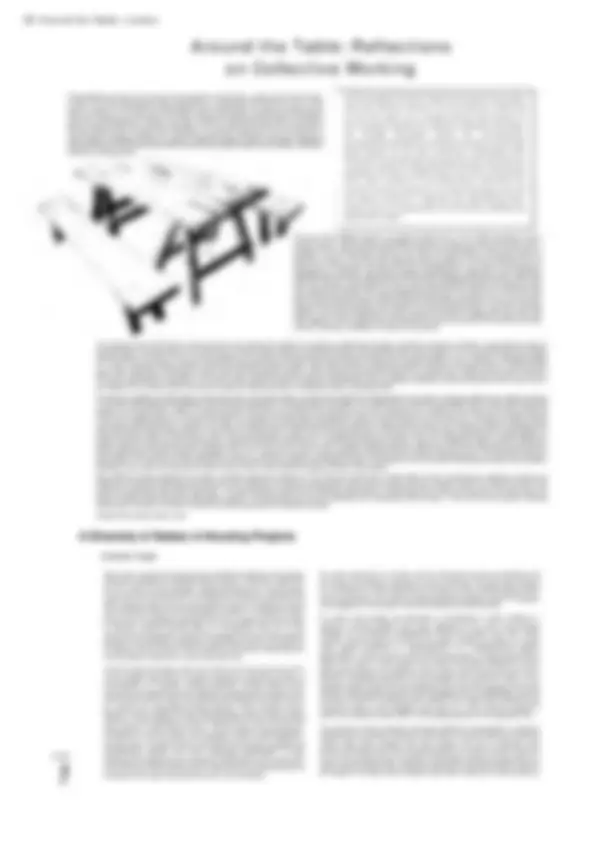
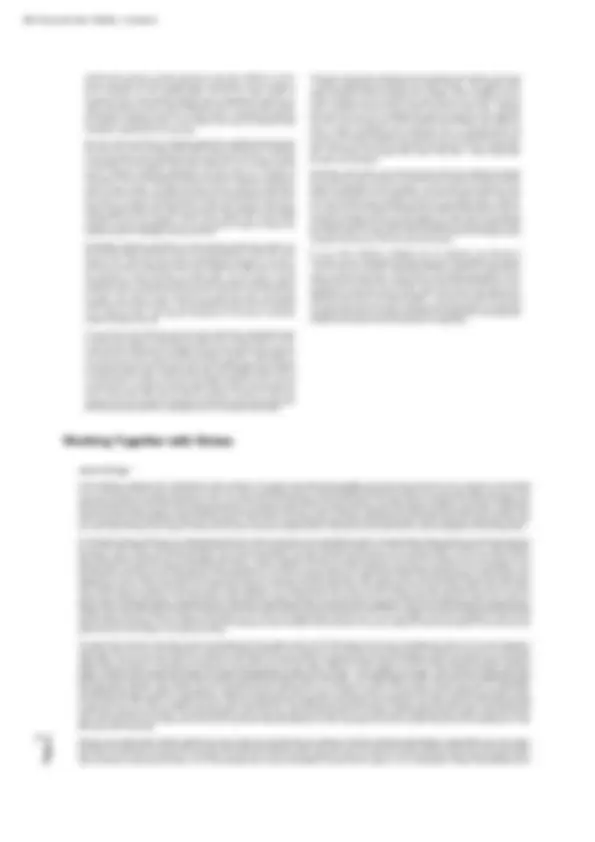
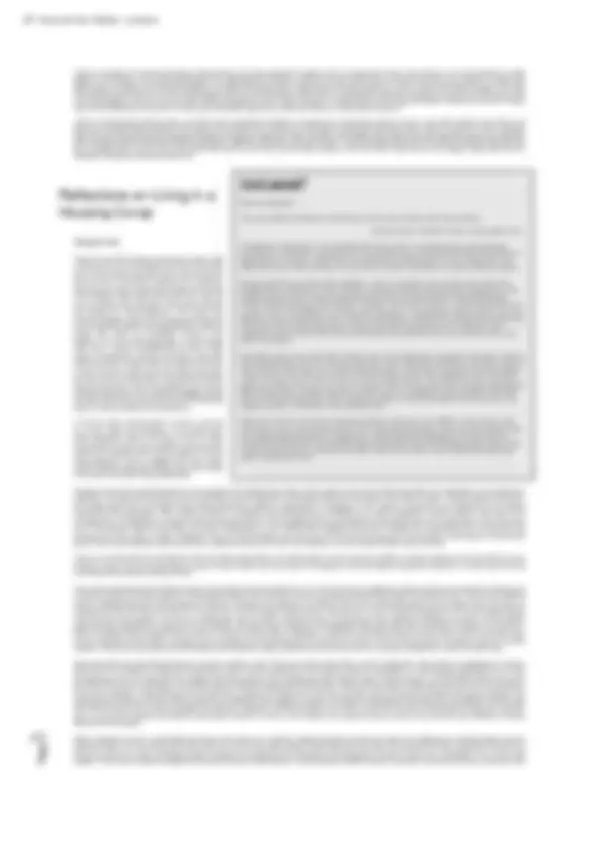
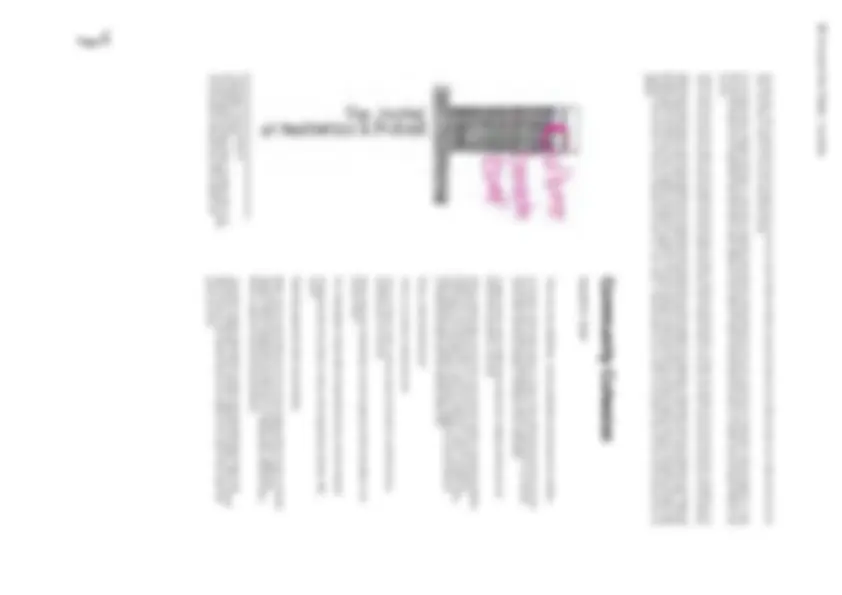
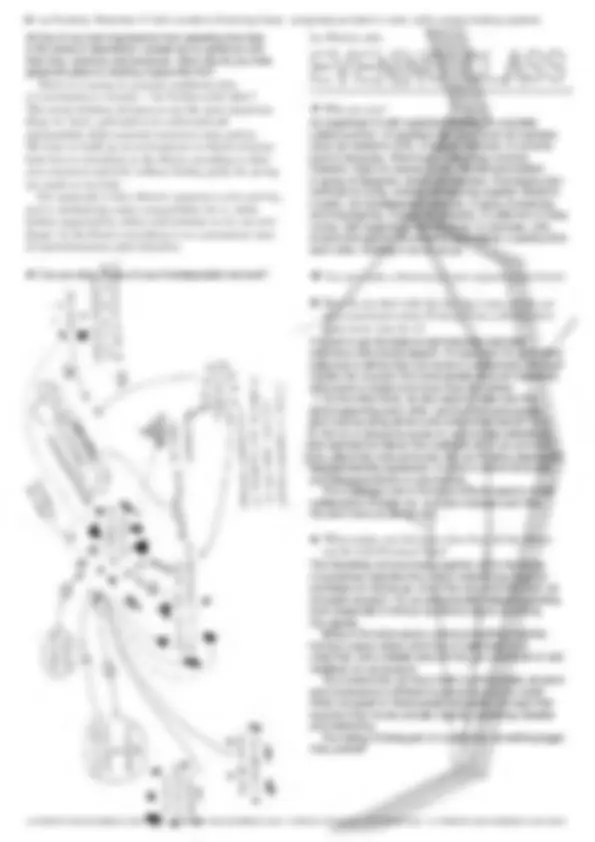
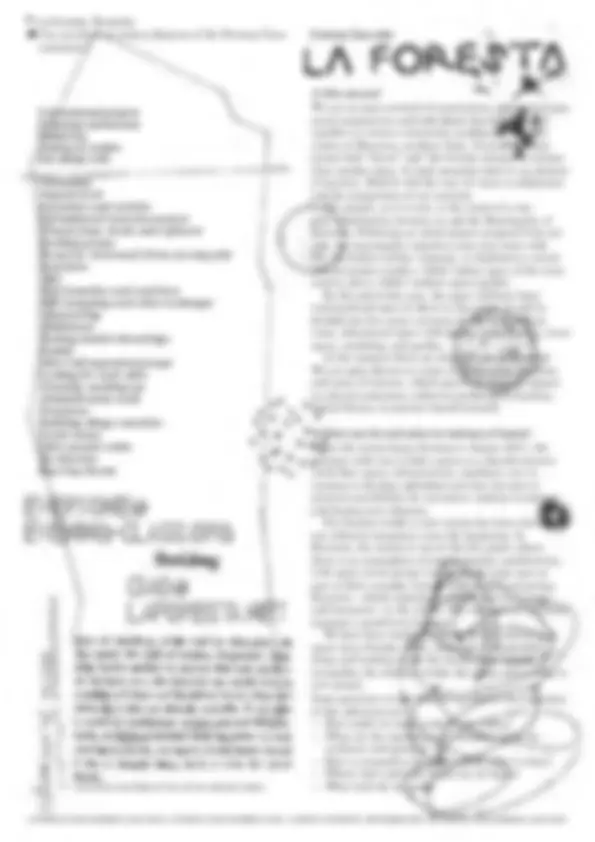
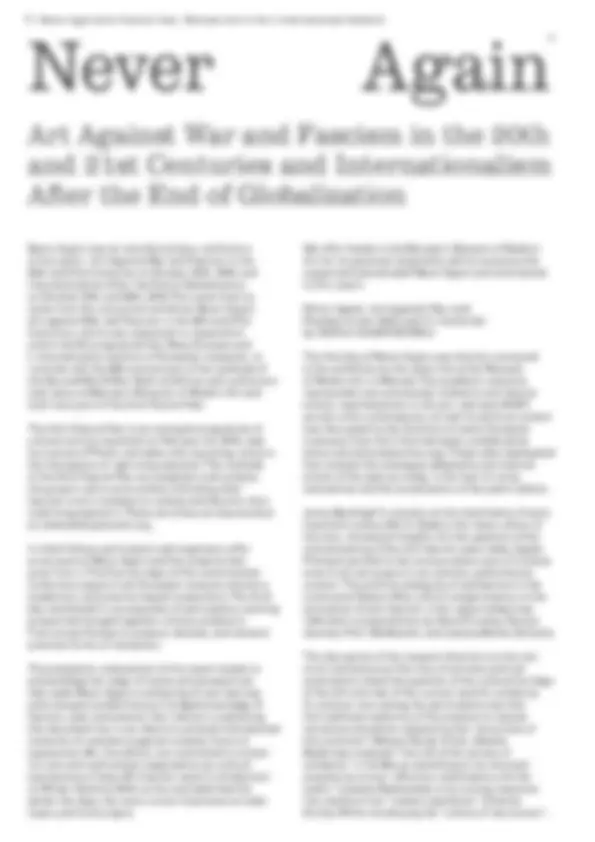
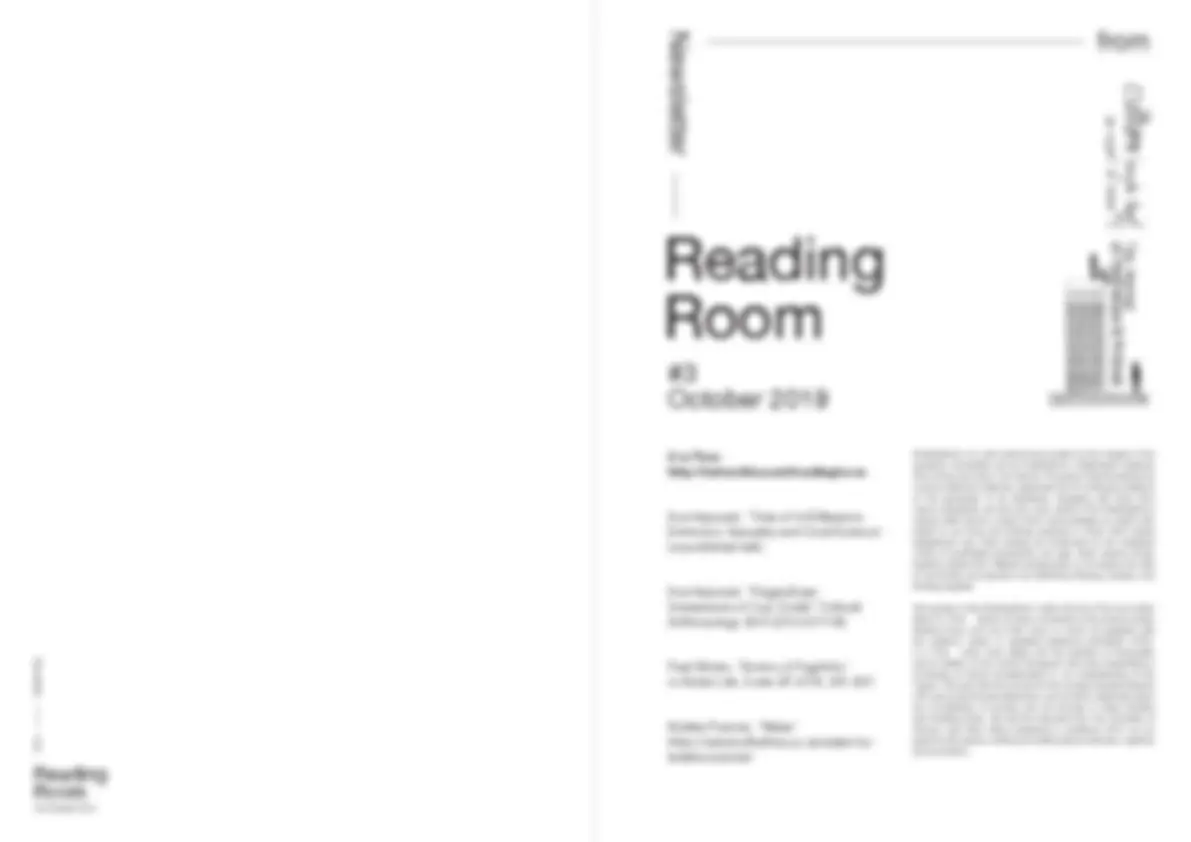
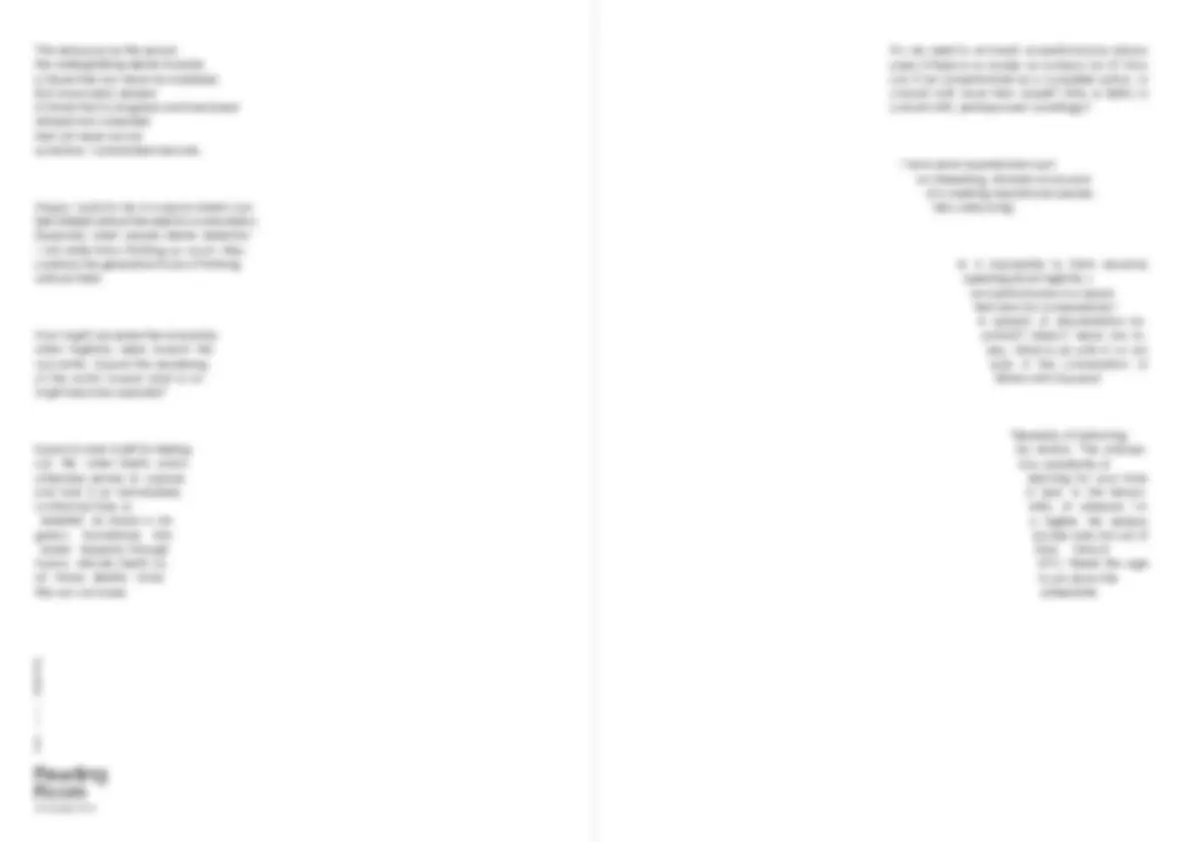
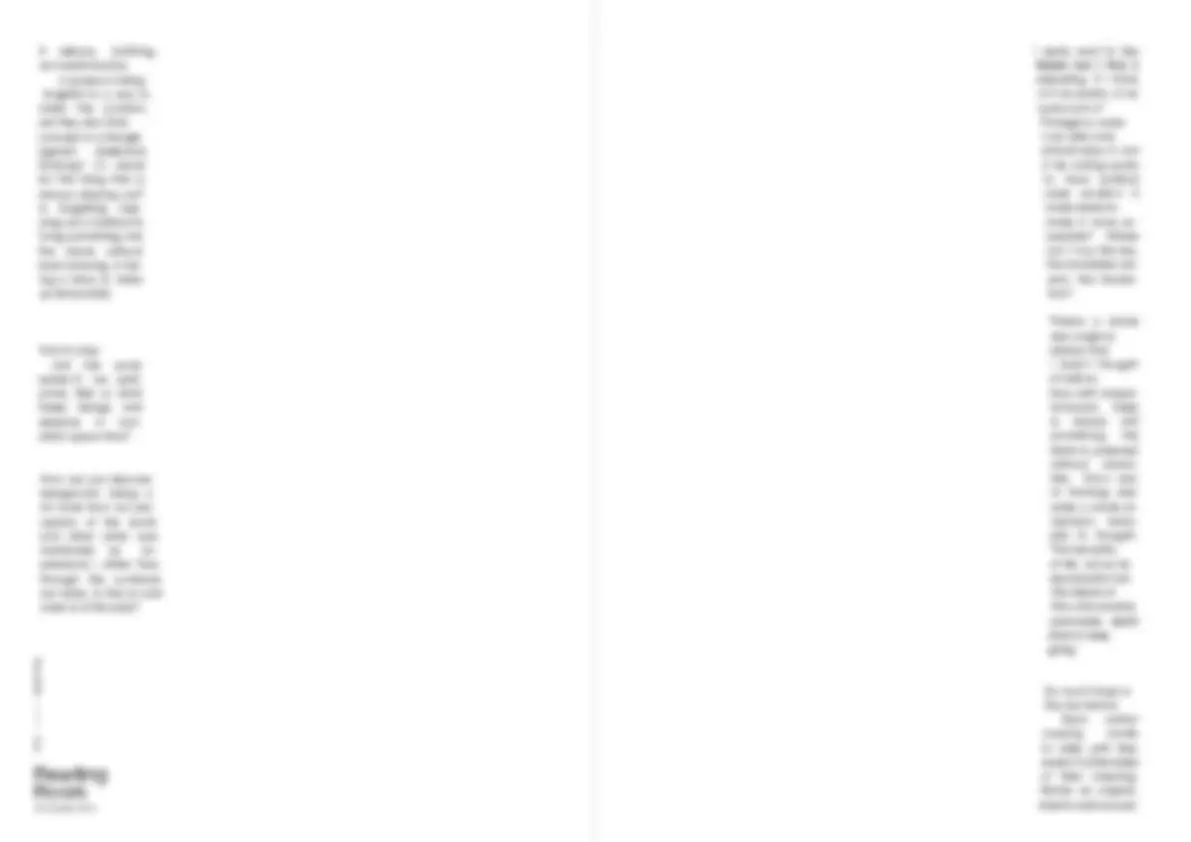
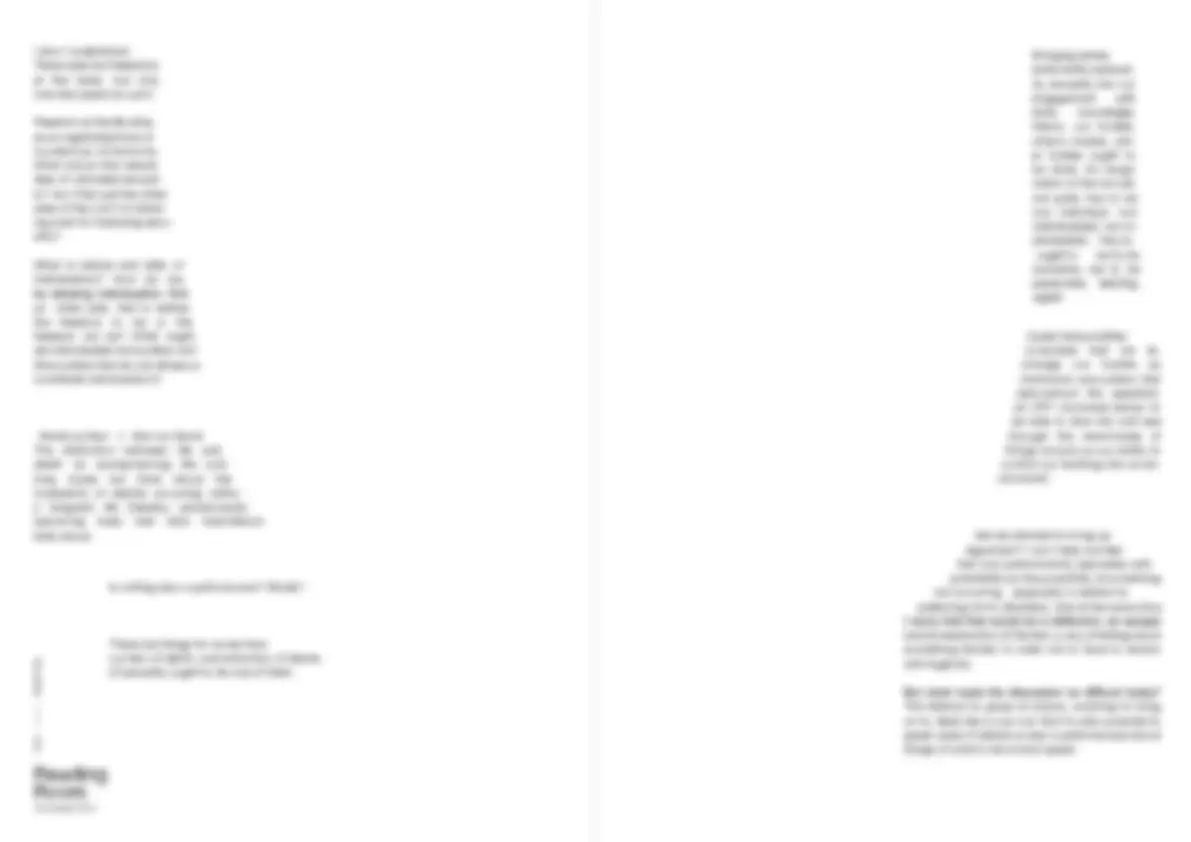
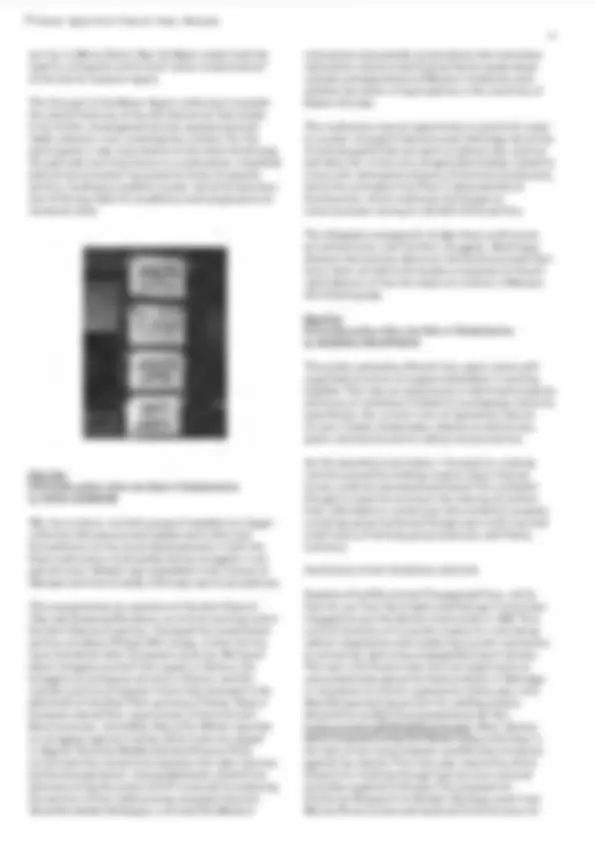
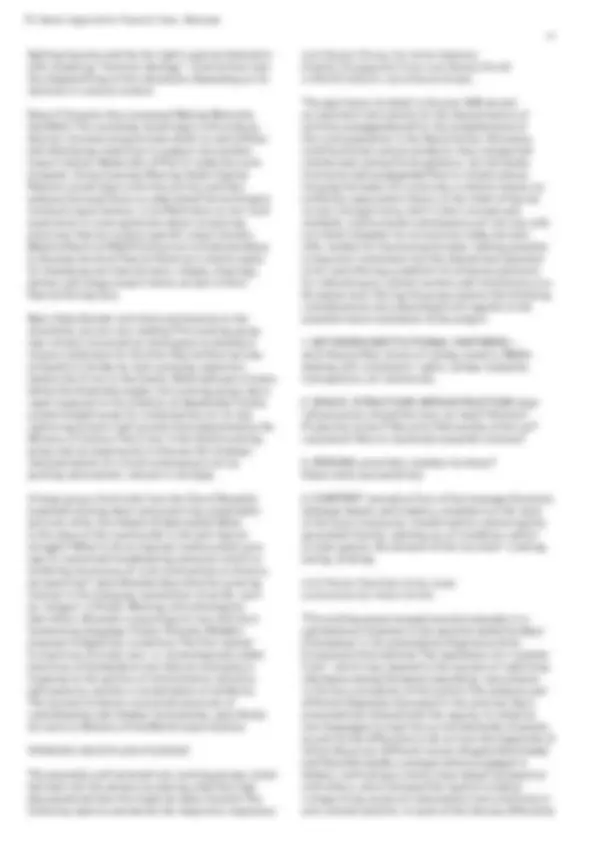
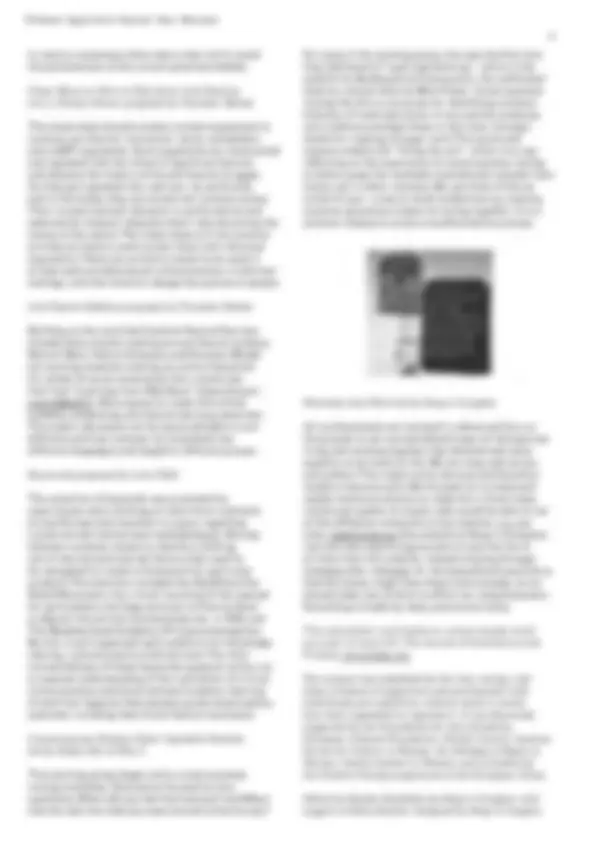
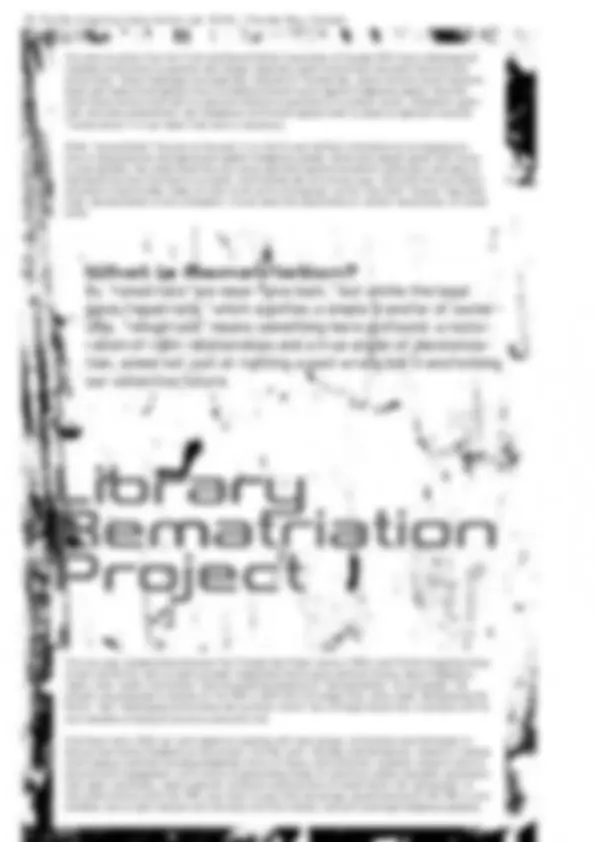
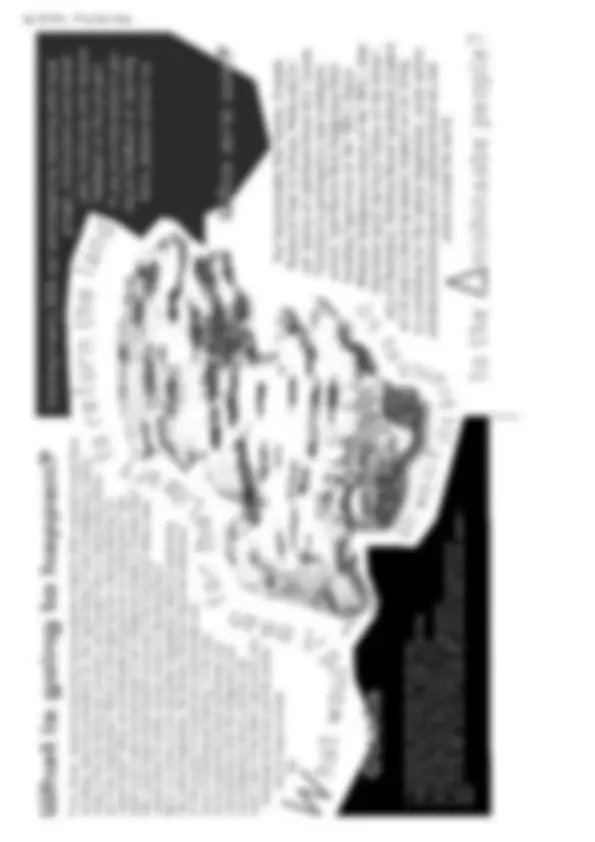
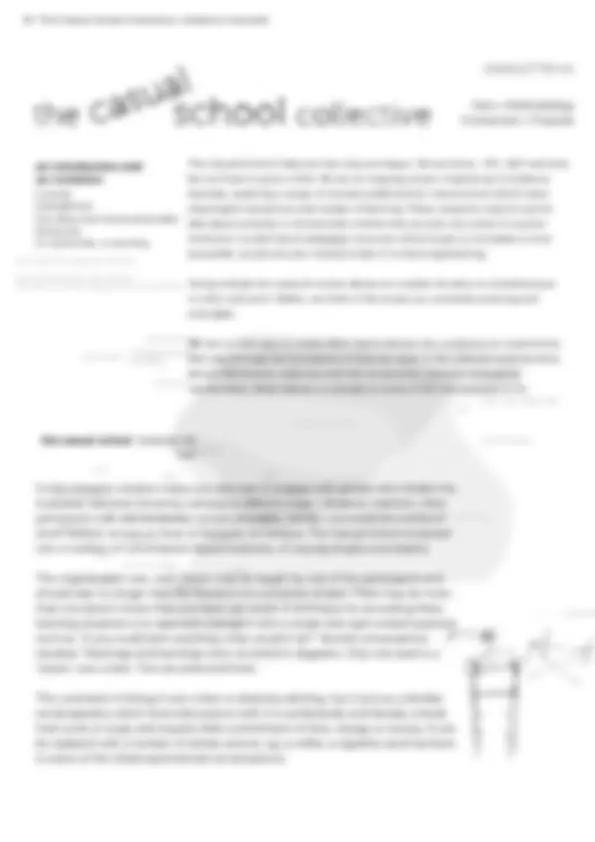
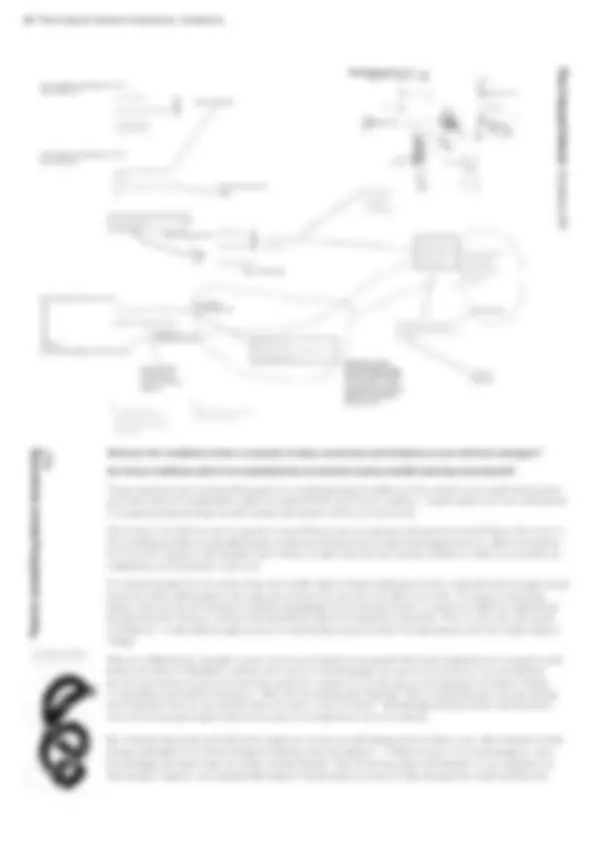
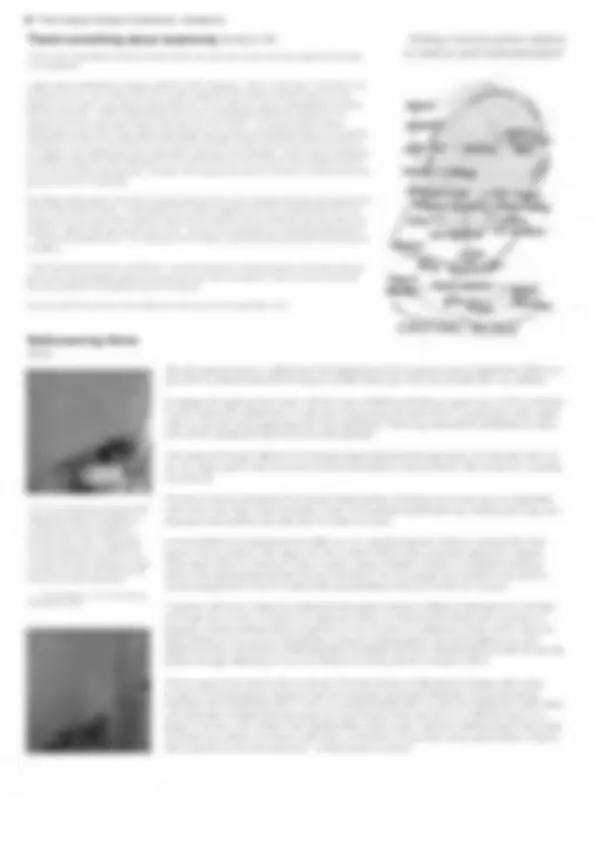
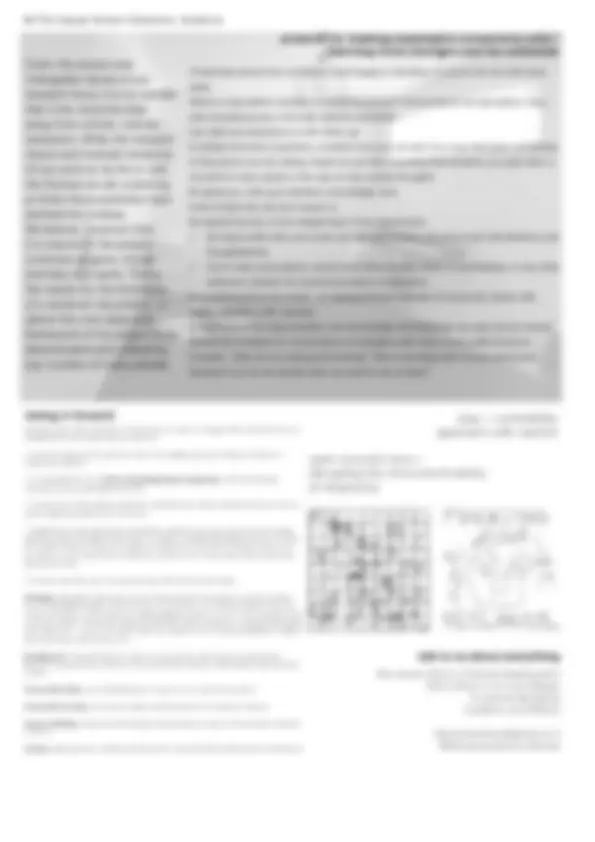
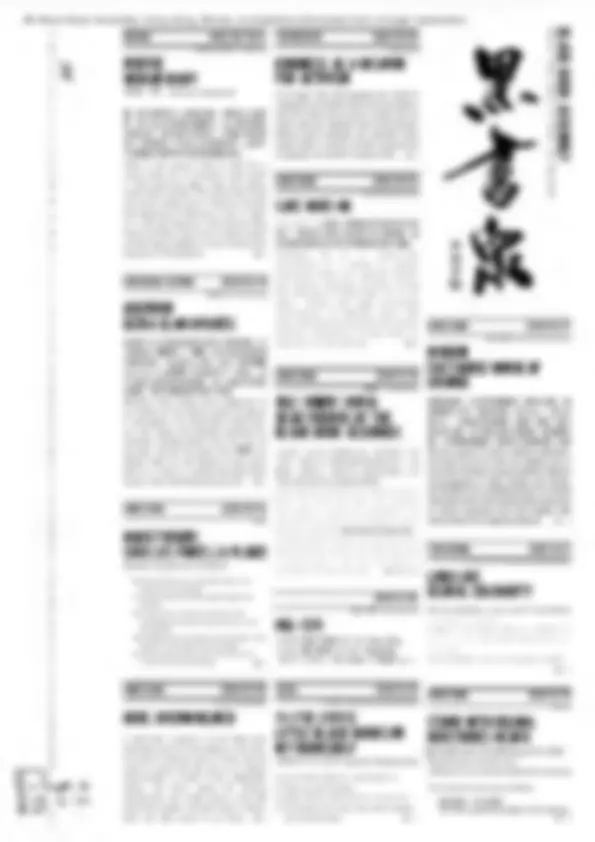
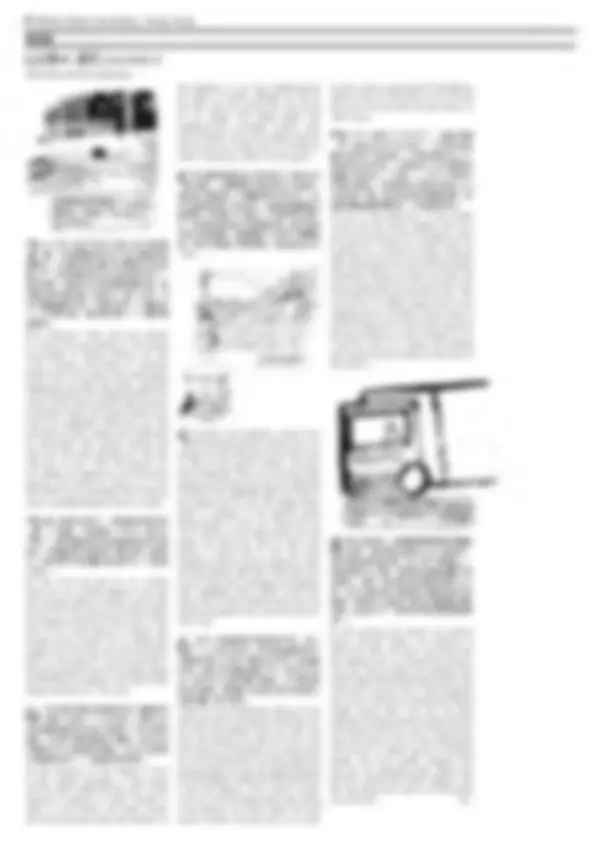

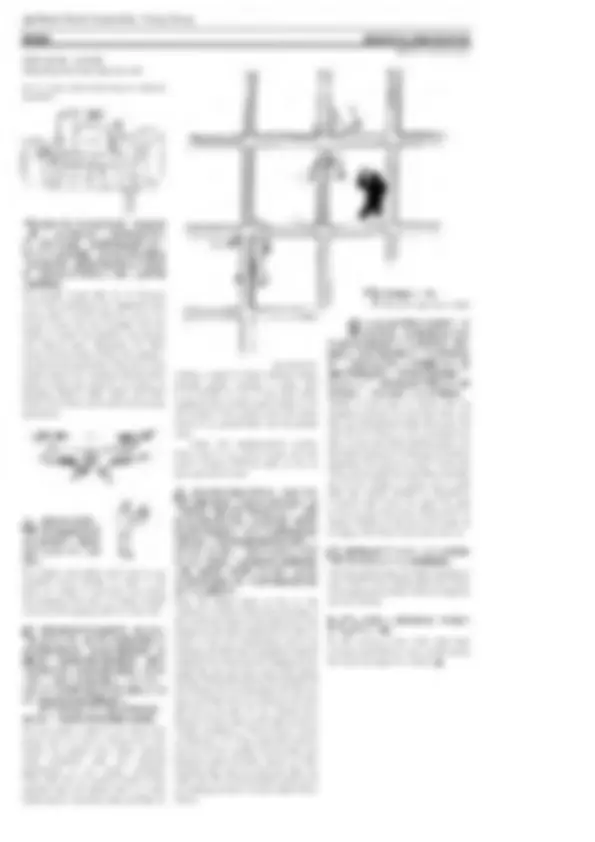
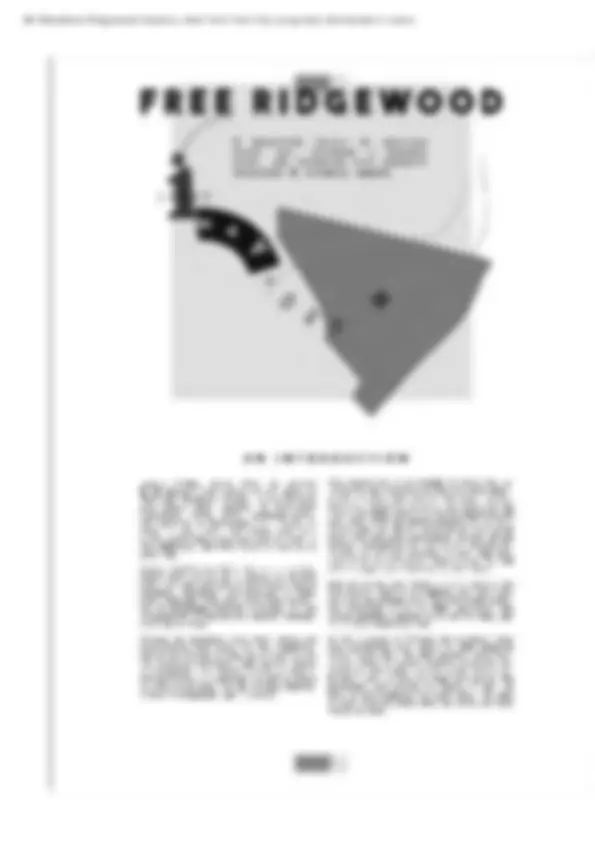
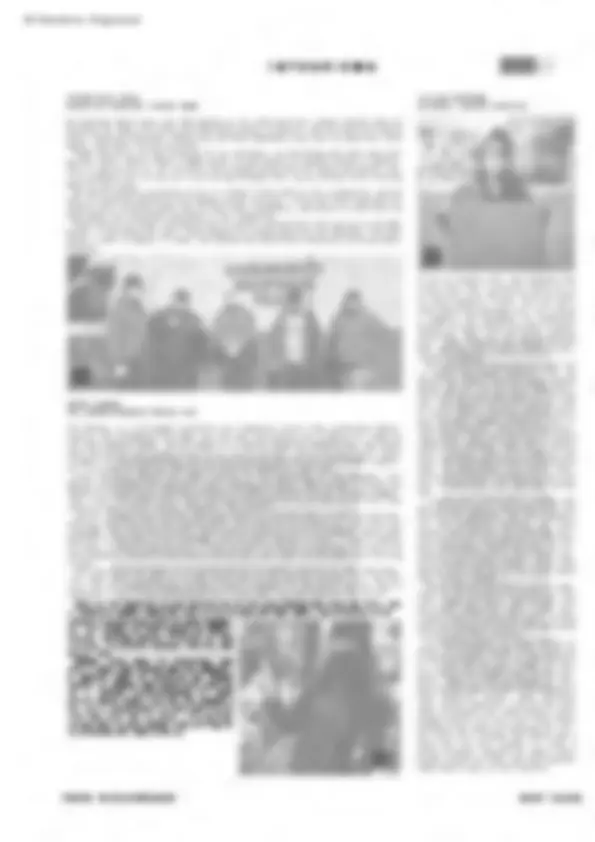
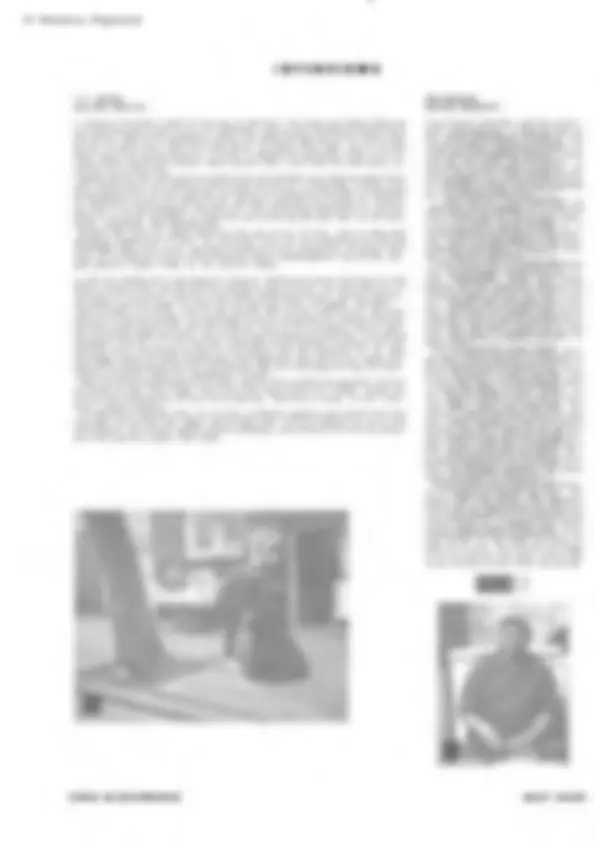
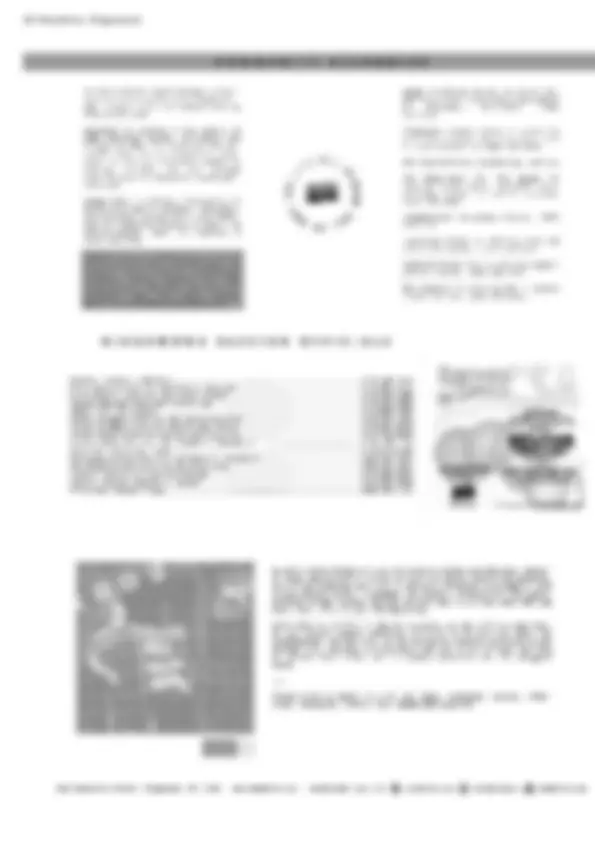
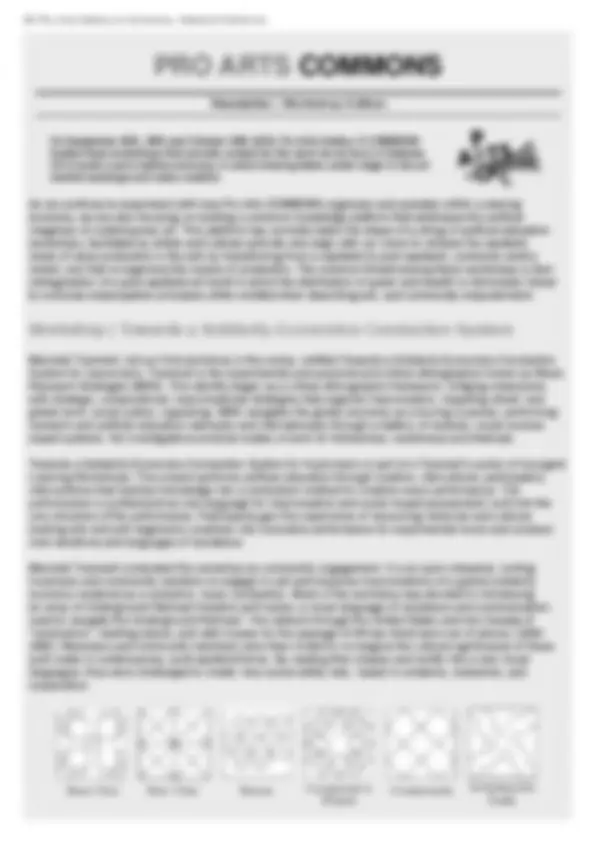
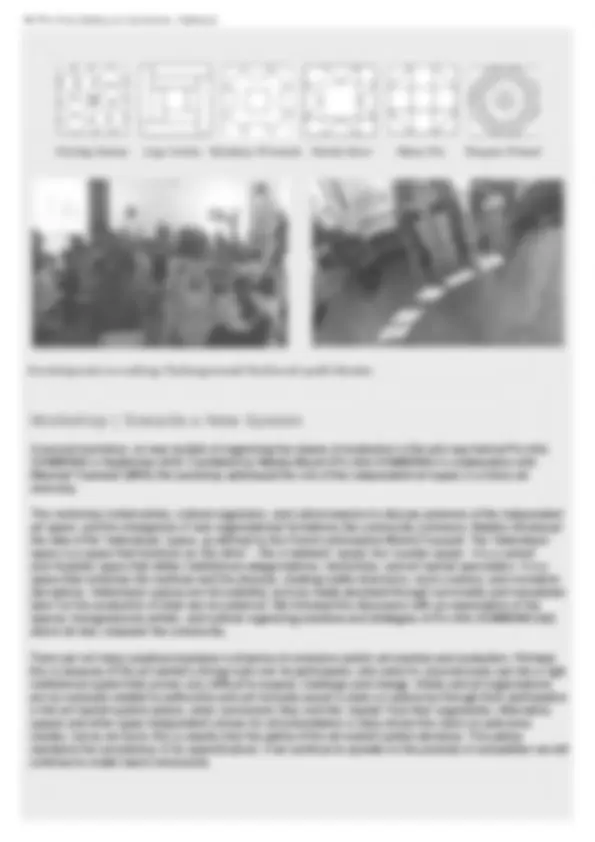
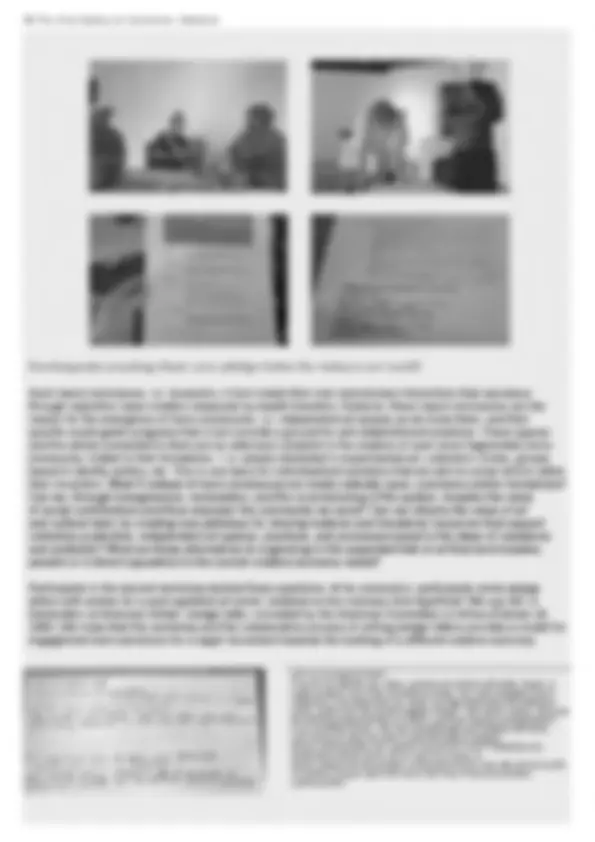
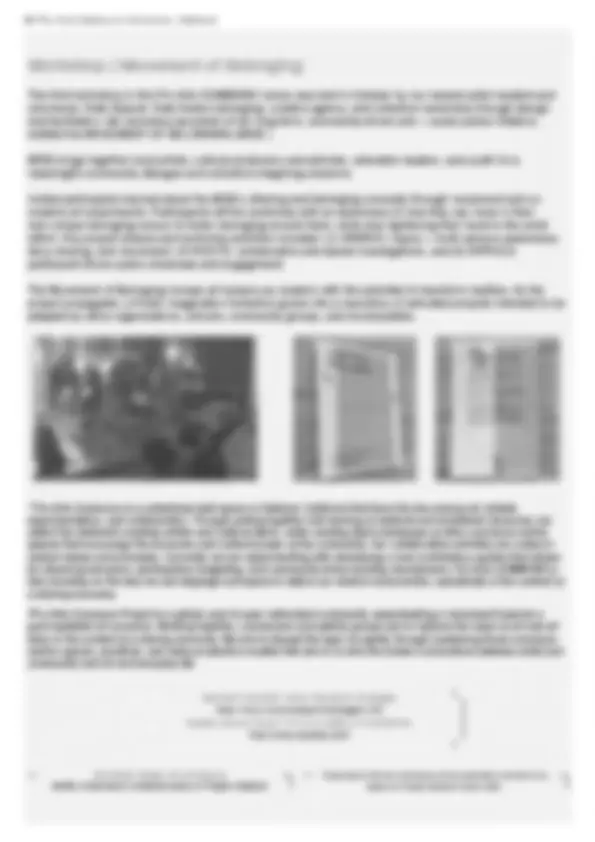
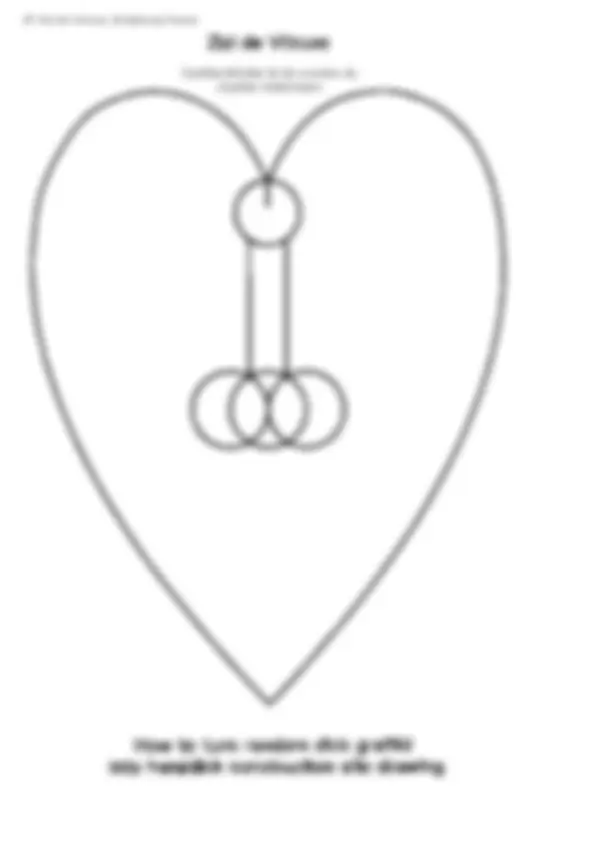
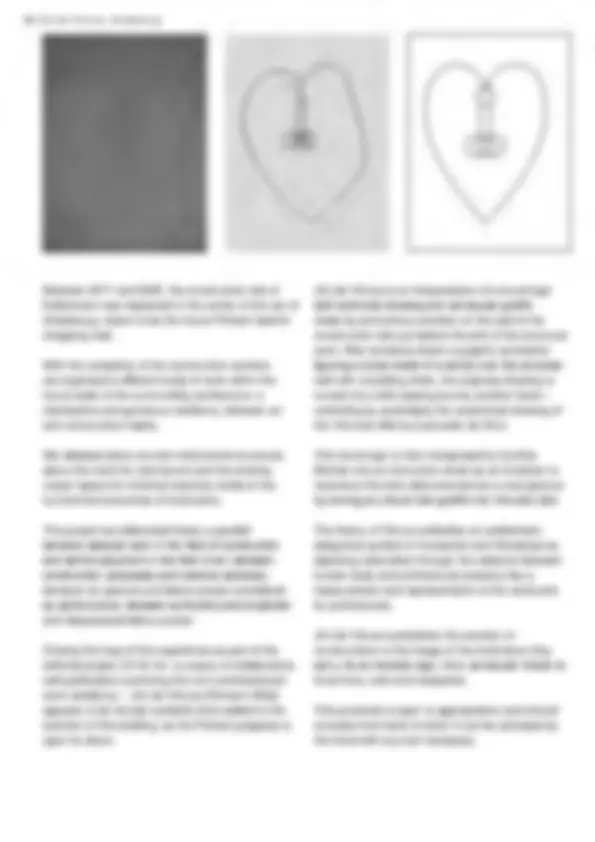
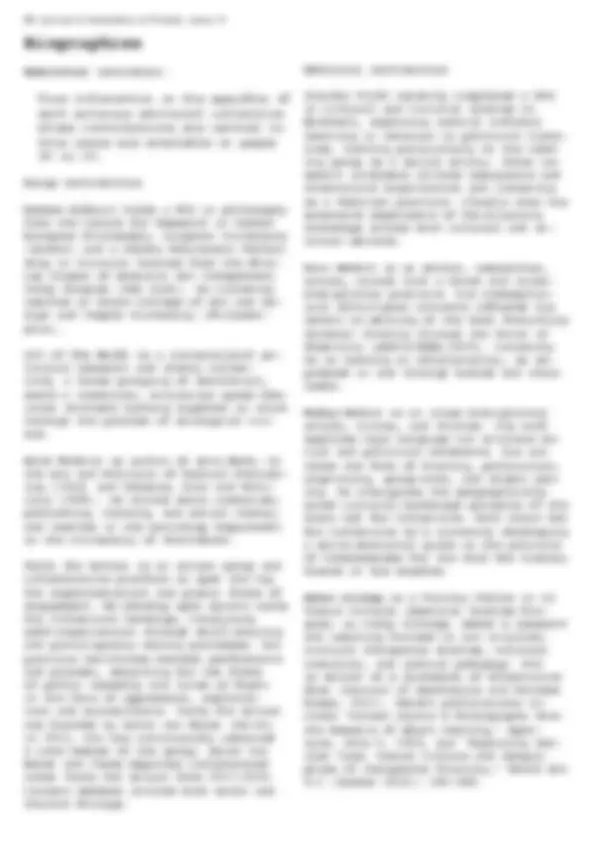
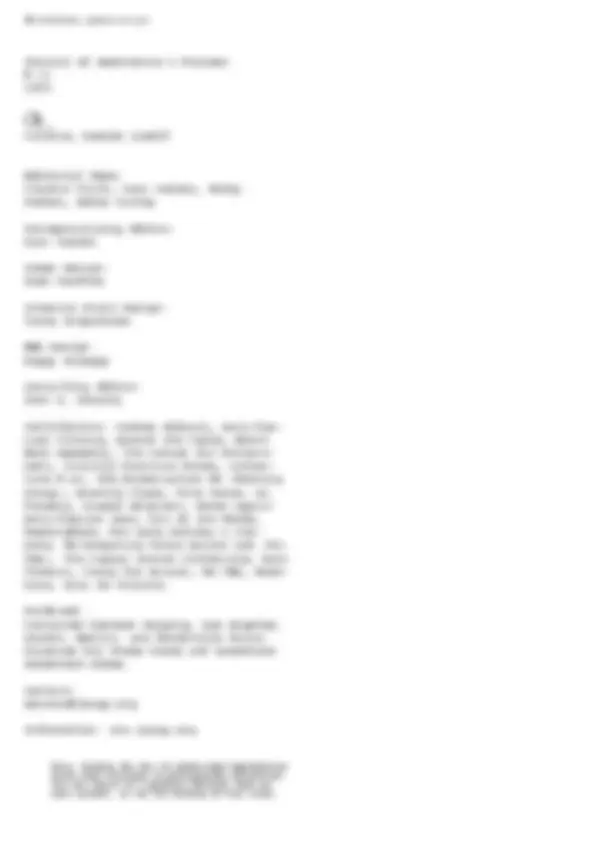


Study with the several resources on Docsity

Earn points by helping other students or get them with a premium plan


Prepare for your exams
Study with the several resources on Docsity

Earn points to download
Earn points by helping other students or get them with a premium plan
Community
Ask the community for help and clear up your study doubts
Discover the best universities in your country according to Docsity users
Free resources
Download our free guides on studying techniques, anxiety management strategies, and thesis advice from Docsity tutors
groping, testing movement, where an institution's success- es and failures, limits, and possibilities are brought into the.
Typology: Lecture notes
1 / 102

This page cannot be seen from the preview
Don't miss anything!





























































































Project Description
Are you in a pre-existing reading/discussion group, an ac- tivist or art collective, OR do you need a reason to start one? If so, join us in a year-long interroga- tion of extra-institutional, avant garde practice that stands decid- edly outside of but in some affir- mative relation to progressive or radical parties and cultural insti- tutions. Over the year, you will in- vestigate questions related to au- tonomous anti-fascist and/or avant garde practice– whatever is most appropriate to your community, con- text or ongoing inquiries– through activity, in reading groups, in open discussions... however. As a contribution to our 11th issue, you will be invited to col- laboratively produce your own 1, 2 or 4-page A4 newsletter and to dis- tribute it within your community as a part your active practice. We will have $5 grants for you to ap- ply to (a simple email) in order to assist you in paying for photocop- ies.
What Is Inside
This issue contains newsletters from these collectives: H @.ac (Lancashire) H Antifascist Culture (Athens) H Never Again/Anti-Fascist Year (Warsaw) H Around the Table, The Field (London) H Black Book (Hong Kong) H Casual School Collective (Canberra) H Center for Enchantment (Albany) H Critical Practice (Los Angeles) H DSA Ecosocialist WG (Santa Cruz) H Evening Class (London) H Five Years (London) H La Foresta/Evening Class (Rovereto) H Pro Art Gallery and Common (Oakland) H RIVAL (Thunder Bay) H Terra Critica (Utrecht) H We, TBD (Los Angeles) H Woodbine (Ridgewood) H Museum Adjacent (Torrance) H Zizi de Vitruve (Strasbourg)
In Addition
H Nick Thoburn on the newsletters as communist object. H Out of the Woods Collective on eco-fascism. H Hammam Aldouri on the apolitical nature of the liberal ideal of art’s collective truth-telling voice. H Tools for Action—an interview on an anti-fascist art project.
Cont. on inside cover
For your local newsletter, you
will be your own editorial collective. Nevertheless, you are welcome to di-
alog with us and other participating groups about the project and the na-
ture of the investigation. At the end of the year, a com-
pendium of the local newsletters will comprise the bulk of our journal’s
11th issue.
Notes
for both content-based and poetic rea- sons- to appreciate how you might
voice these relations and for what you have to say.
ing for fundamentalist takes on au- tonomy, but rather on critical rela-
tion to cultural and political power. Submissions from institutions will be
considered.
Rationale
We hope to spark locally situated in-
vestigations on what it means to pur- posefully practice outside but in some
indeterminate affinity to the somewhat progressive or radical political and
cultural institutions whose profiles have risen over the last few years.
Groups like the DSA, Podemos and Plan C. are examples of formal political
structures that now actually seem to be attempting to meaningfully respond-
ing to issues this journal has ex- tra-institutionally concerned itself
with. In this moment when party poli-
tics can be justified in their exis- tential fight against the right and
its biopolitical means of control and killing the planet, this issue seeks
to support the ongoing ways of being autonomous to and organised outside of
but in some relation to hopeful formal politics.
Particularly, but not exclu- sively, we are interested in ques- tions that culturally think through left politics towards some beyond. For just as this project sits beside func- tionalized political organization, it also sits critically beside the func- tionalization of culture. Therefore, through autonomy, we are interested in how culture that seems to be outside of institutions acts to build other ways of being, and not just through the representations of “the political” that good museums and galleries can do. In this way, this is a cultural question as much as it is a political one.
–––––––
Social media demonstrate how our so- cial spheres have been utilized for profit’s ends. This media and the cul- tural industries show how the appear- ance of cultural significance can be translated into a variety of ways for others to profit gain. Social media is a reflective mirage for radical theo- ry and images to appear with no actual political cohesion besides affective affinity. With your help, this issue hopes to reclaim the gap between the radi- cal imaginary built on actual social capacity, and formal politics. We ac- knowledge that the culture indus- tries and global corporations’ have functionalized some of the rhetori- cal, aesthetic and political content of this space that was until recent- ly a matter of left cultural work for the liberal side of their neo-liberal ends. Our motivation here is not to discuss cooption, but rather to rein- vigorate a more nuanced and socially rich texture beside our own progres- sive institutions. Locally, cultural institutions and political meet-ups are where we find fellow travelers; institutions they may fund you, “like” you, connect you to wider discourse and the field
Cont. on inside back cover
4
Anti-fascist Culture (Athens, Thessaloniki & beyond) ... p. We took the name Antifascist Culture to mark our stance and opted for member anonymity to ensure that whatever we did would not become ‘cultural capital’. We wanted to register collective resistance in the cultural field in advance of the fascist effect. Anti-fascism would be low-fi political education: a means to stand against dominant ideology in the circumstances faced in Greece.
This newslettter follows the group’s first piece of collective writing, done in 2019- (eds.)
Museum Adjacent (Los Angeles California) ................... p. -Formal writing authors- Larissa Nickel and Leslie Foster. Content contributions from Museum Adjacent collective including text and images.
Newsletter was distributed via pdf to Museum Adja- cent (MA) members, and friends/alumni of the Torrance Art Museum FORUM program. It was intended to be printed and distributed internationally at now post- poned MA events and exhibitions/ interactions with other collectives.
We TBD (Los Angeles) .................................................... p. -Von Curtis, Olga Koumoundouros, Francesca Lalane, Kristy Lovich, Ofelia Marquez, Jennifer Moon
The Newsletter hasn’t been distributed yet due to Covid- sheltering in place orders. The plan was for me to print out at LA County DPH (Department of Public Healt) office using their photocopier. But DPH pivoted quickly to address public health issues. Leadership was called in, copiers were in use more than usual and all staff except for leadership was asked to work from home, this included my position. I should have gone to a copy center and paid, but my mind was on coping with impact of disease since schools were closed, then my Dad got sick and died. The community centers and art venues where we’d planned to distribute the newsletter remain closed. We intended this newsletter to be read in hand and have not looked into online plat- forms to distribute. We welcome any suggestions on how to proceed.
Around the Table/The Field at New Cross (London) ..... p.
We aim to distribute hardcopies of this publication in vari- ous locations such as social centres in the UK and the US.
Newsletter descriptions and page number
Five Years (London) ....................................................... p. Five Years is an artists’ organisation and project space, com- prising a fluctuating membership (currently 18 of us con- tribute to the programming and administration) and based in London. Over the course of its 22 year existing Five Years has presented more than 250 exhibitions and events at 3 primary venues and has involved 35 members, functioning without individual directorship or regular funding. More in- formation is provided in the introduction to the newsletter and via the embedded link to our website.
Since we moved to Archway, we stablished a series of collaborative rapports with the local library which is named as Archway Library. We have organised two events so far workshops, displays and performances. Our next series in to which the workshop on fascism/anti-fascism reading group will be held coinciding with the Islington Festival of Storytelling.
collective @ .ac (Lancashire) ...................................... p. We are producing newsletters on the two sides of an A sheet of paper to distribute on the picket line at the Univer- sity of Central Lancashire addressing key issues of casualiza- tion and precarious working conditions, but also graphically addressing the creative potential of strike action as a space of and democratic becoming.
Evening Class (London) ................................................. p. The DCW newsletter was distributed at various DCW (De- sign and Cultural Workers Union) events, and by members in their workplaces. They were also handed out on the picket line and at events during the 14 day UCU Strike in March this year.
DSA Ecosocialist WG (Santa Cruz) ................................. p.
Critical Practice Notes (Los Angeles) ............................. p. Critical Practice Notes is a mailed newsletter consisting of interviews and reflection on critical practices mailed to a list of 150 subscribers.
The Center for Enchantmen t (Albany) .......................... p. The Center stands beside an institution called Grand Street Community Arts in Albany, NY, located in old St. Anthony’s Church in Albany, NY.
A first draft of our newsletter was distributed at a com- munity breakfast at GSCA on February 23, 2020. A revised edition that removed mention of in-person events was wheat-pasted as a poster on the side of Grand Street Com- munity Arts on May 2, 2020.
Newsletter Descriptions
5 Journal of Aesthetics & Protest, issue 11
Liz Ward (graduate student at LU)
This brochure was distributed at meetings with stakehold- ers in the project, in Thunder Bay. The project is a collab- oration with The Thunder Bay Public Library. (RiVAL is a workshop for the radical imagination, social justice and decolonization based at Lakehead University and active around the world.)
The Casual School Collective (Canberra) ....................... p.
We are either current or alumni of the Australian National University School of Art and Design, but that is only our be- ginnings. We are about to expand the collective beyond our current institutional borders. We are all practicing artists and/or curators. The collective was born out of a desire to do something more concrete in our respective communities about the ever confining crunch of neoliberalism.
Black Book Assembly .................................................... p. (Hong Kong, Wuhan, and elsewhere)
Because of being unable to print in Wuhan as initially planned, we had the inadvertent opportunity to print in An- kara, but the breakout of the virus in the West around that time slowed the process of getting the finished print run back to East Asia, so we initially began distributing the digi- tal version, which has also been printed in small batches by friends and comrades in Seoul, Yogyakarta and Guangzhou. This month we have also started sending hard copies to info shops and spaces around Hong Kong, Tokyo and Taipei.
Woodbine (Ridgewood Queens, New York) ................... p. The newsletter has been distributed in Ridgewood, Queens, at our food pantry, and door-to-door in the neighborhood.
Pro Arts Gallery & Commons (Oakland) ........................ p.
Pro Arts’ newsletter has been distributed from their gallery space located on Frank Ogawa/Oscar Grant Plaza in Oakland California.
Zizi de Vitruve (Strasbourg) ........................................... p. -Cynthia Montier & les ouvriers du chantier Kellermann, Anonymous construction site workers
The newsletter was printed by Cynthia Montier in 150 exemplars in February 2020 and was distributed from hand to hand on various occasions since then. It was meant to be clandestinely diffused in 500 copies at the opening of Primark shopping mall in Strasbourg the 16th April 2020— that has been postponed because of the quarantine period in France.
La Foresta (Rovereto IT), Evening Clas s (London) ......... p. “The newsletter was printed on a Risograph and distribut- ed in Italy and Germany, simply at events we went to or to people we met.” (note from La Foresta) “The La Foresta newsletter was distributed from their space in Rovereto, and informally by Evening Class to friends and collaborators in London (at the ASP5 book fair and the HUR- RA HURRA festival in Halle Germany).” (note from Evening Class)
Never Again /Anti-Fascist Year (Warsaw) ....................... p. (Anti-fascist Year + Art Against War and Fascism in the 20th and 21st Centuries and Internationalism After the End of Globalization, Edited by Marsha Bradfield and Keep it Complex, with support of Kuba Szreder. Designed by Keep it Complex.)
The newsletter was produced after the Never Again confer- ence, Kuba Szreder solicited contributions to the newsletter you are now reading. This working group was initially con- ceived as meta space to develop a mission statement for the Anti-Fascist Year but was eclipsed on the day by more pressing urgencies; namely the Crisis in the Castle.”
Never Again was an interdisciplinary conference of two parts - Art Against War and Fascism in the 20th and 21st Centuries on October 24th, 2019, and Internationalism After the End of Globalization on October 25th and 26th,
The Crisis in the Castle relates to the right-wing curatorial take-over of the Center for Contemporary Art Ujazdowski Castle (CCA) (-eds.)
ReadingRoom (Utrecht) ................................................. p.
Include here is one of four newsletter digitally shared with the growing number of (former and current) participants of ReadingRoom and with the friends of Casco Art Institute.
The Re-Imagining Value Action Lab/ RiVAL ................. p. (Thunder Bay, Canada)
7 Journal of Aesthetics & Protest, issue 11 practices that resonate in context; for the needs of the context in which prac- tices were situated.
Collectivity and site relate for sev- eral reasons-it is between people and other things that any site's meaning- fulness can be worked through– in prac- tice or discourse. Without collectivi- ty, there is only individual will that may or may not have progressive import. While collectivity is not equivalent with meaningful discoure, we assume that it serves as a check on individual am- bition. Rather, within collectivity, if one benefits, so do the rest.
We know that the variation of cultur- al things, how one day a song might be pleasant but the next day it might be a call to arms, is dependent to the wider changes in context.
But if the practice of concerted and conscious cultural work is to be tak- en seriously, it insists that considered work does have its own effects on the
things it relates to.
The critical problem that this issue of the Journal of Aesthetics & Protest hopes to address relates to how sus- tained and intelligent and considered practice is or is not supported in rela- tion to the very specific and highly in- dividualized contexts that we all live within.
For us, a newsletter represents the sus
If "cultural" things are comprehended as unique objects- singular paintings, dances, books, newsletter- then we won- der how those unique expressions exist as if they had the autonomy that West- ern thought gives to individual (male, white) humans. We wanted to listen to printed words as though they might vary or fluctuate as though they had their own own being.
To be situated locally is to relate at a particular scale. Yet the local is but a poetic description; qualifying context, beings and things someone considers to at a be meaningfully scale. For this
issue, we allowed collectives to define their 'local' as the scale at which they vibrated. We were interested in hearing
cu/lure, exp~ssio n
in ilself..
8
tained efforts of a people within a place to maintain a focused and yet also al- most mundane relation to both the commu- nity and their habitus. With this issue, we wanted to support weird but meaning- ful political and cultural activity over time.
Non-fascist or avant garde practice varyingly pushes against power's logis- tics.
Practice and habit-informed critical and creative sociality intertwined with the day's necessities finds relational res- onance that exeedes state policing. It organizes for itself, in relation to more than spectacular external instu- tionionality. As this issue's Out of the Woods and Tools for Action discuss, such practices develop from and can develop towards innately radical ways of being different; because they find no compulsion to explain to authority who and why they are.
This project facilitates collective self-organizations of meaning and capac- ities to act at some scale. Newsletters express unique yet generalizable ap- proaches to the page; expressing histor- ical, emotional, educational, documenta- ry and organizational concerns.
editorial ar t
t.
l.
dc:lion. Whal is. l. u,1:-,r interest• lhit
-pcrc.pec·h.,,.e&?
I
1, W~ of b.au, \i1•~1de or .g~i•t
focu. (see ne~~l l l r~
l~ 9a•GailJ e arlic 11lcJ.ionS 0r "~1.donorny• ·· ( s~e. newsleHe~) nu tire i\t1lof meani.~~ lnt! nlngfuL
10
criteria and means of association and critical evaluation by which this political problem can be effectively pursued.
Editors: This issue’s conceptualization relates to how you discuss pamphlets as communist objects… contextual, situated, the object as “comrade” and “coworker.” Can you describe a bit how you understand printed and/or digital matter as communist objects?
Nick: Let me sketch some context for the concept of the “communist object,” drawing from my book, Anti-Book: On the Art and Politics of Radical Publishing. My concern has been to tease out criteria for a communism of publishing, a communism that broadens attention from the content of publishing to its wider materiality. By materiality here, I mean the open-ended mesh of publishing forms, processes, and relations – writing, editing, design, distribution, media objects and platforms, meanings, readings, sensations – all of which bear the economies of production and consump- tion that govern the publishing field. In this field, publishing by communist or emancipatory ventures is traversed by crisis. I make this point not as a lament, though, for crisis is its necessary condition of existence. Communist publishing emerges from social conditions – of racialization, gender, class, and manifold other oppressions – that are fundamen- tally hostile. And such publishing succeeds only insofar as it interrogates and undermines these conditions – it can have no happy accommodation with capitalist society.
This is true of the content of communist publishing ven- tures – interrogation of social crisis is the substance of their critical ideas, their leading edge, rightly so. We know this. What is less often considered is that social crisis also condi- tions the materiality of such publishing. The fashioning of a publishing venture out of hostile social conditions colours the mode of writing and collaboration, the distribution and archiving, the forms of readership and social effects, the visual design and graphic style, the (anti-)economic models, the artifactual and sensory forms, and so forth. This is what gives such ventures their specific qualities and allure – often curious, uneven, jarring, or weird. Sometimes these quali- ties exist without much notice or self-reflection on the part of publishers or readers; occasionally publishers seek to dis- avow or disguise them by, say, adopting commercial styles of visual design. But other times they become the direct ob- ject of intervention, where publishing ventures interrogate and experiment with their own materiality – foregrounding their crisis-ridden conditions, straining to construct commu- nist forms, processes, and relations within and against the publishing field. And this is where my interest lies, with the materiality of communist or emancipatory publishing as an object of attention, reflexive practice, and politics in its own right.
This is the context within which I developed the concept of the communist object, specifically as a means to under- stand the political materiality of the pamphlet form (where the pamphlet is a non-periodical printed publication, typically between 5 and 48 pages, and roughly A5 format size). I wouldn’t want to impose a hard distinction between
the pamphlet and other publishing forms, such as the book, magazine, blog, newsletter, zine, chapbook, leaflet, tweet, communiqué, newspaper, etc. Yet we understand a list like this because we have an intuitive sense that each of these publishing forms tends to coalesce around a specific com- bination of qualities and affordances that is more or less particular to it. My sense when researching these publish- ing forms, and their experimental development by particu- lar publishing ventures, is that a communist materiality of publishing benefits from close attention to the specificities of form, and from developing concepts that are germane to each – even if these concepts can, one hopes, wander off into other domains of application. For example, in Anti-Book , to explore the magazine form (specifically, Mute magazine’s immersive and self-critical hybrid of numerous platforms) I fashion the concept of “diagrammatic publish- ing.” Or, to understand the material form of the book and its modes of authority and passion, I make use of Deleuze and Guattari’s typology of the “root book” and “rhizome book.”
But regarding the concept of the communist object, one of my sources is an enticing comment by Marx, that “Private property,” as it abstracts from the qualities of objects to turn them into value-bearing commodities, “alienates the individuality not only of people but also of things.” The inference, and it’s a beautiful idea, is that communism is the emancipation of objects as much as it is of people, that the emancipation of humanity from subjection to private property will not be achieved without the simultaneous lib- eration of objects from the same regime. Walter Benjamin picks this up, and insists that what Marx is getting at here is not, as Marxists often think, the release of an object’s “use value” from its corralling by commodity exchange, because “use” as we know it is occupied and conditioned to a great degree by the requirements of capitalist accumulation. Rather, as Benjamin puts it, the communist approach to the object “entails the liberation of things from the drudgery of being useful.” A communist object, then, is something that pulls away from and disrupts the capitalist values of use and exchange. As such, it has a certain fetish quality, a fetishism of the anti-commodity: it disrupts regimes of value and derails the isolated human subject that is fashioned within these regimes.
So, my suggestion is that we can detect this mode of the object, the communist object, in the material qualities of self-published pamphlets, if we suspend their “use,” their dissemination of textual content, and allow instead oth- er material qualities to come forward. I stress that this is a mode of the object existent within capitalism, pushing against commodity values in a fledgling, groping fashion. It opens routes and poses problems that have pertinence for thinking beyond capitalism – for “the complete emancipa- tion of all human senses and attributes,” as Marx puts it – but of course the shape of socio-material life in communism remains a vast unknown.
To get an impression of the pamphlet as communist object, it’s helpful to contrast it to the political magazine. Political
Nick Thoburn on newsletters
11 Journal of Aesthetics & Protest, issue 11
journals and magazines have had a preeminent role in the history of revolutionary and avant-garde politics. Think, for example, of how the journals La Révolution surréaliste , Internationale situationniste, and Quaderni rossi are some- thing like the mobile ground upon which Surrealism, the Sit- uationists, and Italian Operaismo came into being through time – key sites and means by which these currents and movements honed their ideas and aesthetic styles, estab- lished group coherence, and gained purchase on the social imaginary. Of course, that is necessary for any revolutionary movement, and yet in the correlation between movement and published medium, the magazine reveals itself to be just that little bit too obedient, ordered and contained by the requirements of a movement.
Small-press pamphlets, by contrast, tend to be much less correlated with social movements, allowing them a more indeterminate, exploratory, and critical character. True of their textual content, this also manifests in their materi- al form. They’re occasional or one-off publications, with ueven infrastructures of distribution at best, loosened from movement-consolidating and marketing imperatives, and encountered by readers as much by chance as intent. As such, small-press pamphlets are self-enclosed and indepen- dent objects, or “monads,” that circulate as charged poten- tial, potential that unfolds in encounters that generate their own spatiotemporal consistency. There are numerous as- pects to this monad quality of the pamphlet form, some of which I can list here: the physical vulnerability of the pam- phlet, which generates intimate and self-instituting modes of association; the “barbaric asceticism” of its pared-down form, in Adorno’s phrase, a “strategic nonsynchronous” relation to the united front of new media and capital; its ephemerality as bearer of the ruptural time of revolution; its disregard for “popularity,” that value par excellence of social media and commodity circulation; and its awkward relation to work and work abolition, produced as flight from the dictatorship of work while revealing the impossibility of such flight under social conditions of capitalism.
Editors: How do you distinguish the idea of a concept from it it joining into a printed (digital and the virtual) object, and also from the wider network of discourse and the milieu of ideas to which that object tends to?
Nick: I’d like to take your question in terms of the relation between political ideas and the practice of political publish- ing, for it’s one that has occupied me a good deal. When writers and publishing ventures turn reflexive attention to their publications, there’s a common mistake of seeking in their publishing forms and practices a direct manifestation of their ideas. It sounds initially like the right move to make, a marriage of content and form, but it can end up losing the specific qualities and effects of publishing materiality by subordinating them to the ideas, leaving the materiality of publishing to become merely the confirmation of ideas and not something with qualities and effects of its own. This approach tends to work with a rather limited understanding and palette of publishing materiality – the simple assertion of the “tactile” value of print over digital platforms, for
example, or leaving all the reflexive work to certain paper stock, covers, or typography and page layout. In conse- quence, materiality ends up playing the role of a cute or clunky illustration, lacking anything like the nuance and complexity of the ideas it carries.
If, on the other hand, publishing ventures foreground and interrogate the open-ended mesh of publishing forms, pro- cess, and relations, then publishing materiality becomes an arena of critical practice in its own right, no longer corralled by its textual content. I don’t mean to say that the ideas become irrelevant, not at all. An emancipatory publishing venture is typically, and rightly, driven by the critical ideas germane to its knots of social crisis and intervention. But if it becomes self-reflexive about its publishing materiality beyond clichéd manifestations, then the relation between its ideas and wider materiality takes shape, as I understand it, as a baggy fit. It’s an approach I develop from Rosa- lind Krauss’s wonderful formulation that certain artworks take form as “self-differing mediums.” As a self-differing medium, an artwork produces recursive loops between its aesthetic aims and a selection of the materialities that comprise its medium, such that the medium is itself trans- formed in and as the work. In this recursive relation, neither aesthetic aim nor medium is the leading party.
In the domain of publishing, this baggy fit between idea and material form is sometimes quite tight – for example, when a prison-abolition journal includes authorship models that favor texts by prisoners, and adopts a distribution structure premised on prisoners receiving hard copies for free. Other times the fit between ideas and published form is much looser – the same publication might choose to break with corporate platforms to run on open-source software. In this latter example, the loose, baggy association between content and publishing form doesn’t necessarily make the form less significant to the specific qualities of the journal. Indeed, one might find that the use of open source induces critical ideas of its own, ideas that filter into the journal’s content, regarding the racializing dimensions of corporate publishing, the limitations of Open Source scenes or easily assumed technical fixes to social problems. Now we see that publishing materiality can generate its own critical ideas and become a domain of political intervention in its own right – and we should remember here that publishing bears and fuels capitalist accumulation, and its racializing and gendering modalities, as much as does audiovisual or social media, making it a far from negligible point of focus for revolutionary critique and practice.
Finally on this question of the relation between ideas and publishing form, sometimes publishing materialities have critical and expressive effects in their own right, “mute redundancies,” as Guattari characterizes them, that take shape in visual, sensory, temporal, organizational, and tech- nological dimensions against the linguistic “overcoding” of the text that they carry.
Editors: We wonder how you might distinguish a newslet- ter from a pamphlet. Picking up a point you made earlier,
13 Journal of Aesthetics & Protest, issue 11
new. It is a temporality that operates in the midst of, and in opposition to, the flattened temporal structure of contem- porary capitalism, with its obsession with immediacy and the “now” – a structure that, for all its apparent modernity, actually impedes the truly new, for it isolates the present from the resources necessary to open it to anything other than a reproduction of the same.
Editors: In your essay “Twitter, Book, Riot: Post-Digital Publishing against Race,” you point towards the non-com- modity nature of the small-press book The 2015 Baltimore Uprising: A Teen Epistolary. In our submission call, we were interested in submissions that wrestled with the commodity form; though with the fact that the submissions would en- gage in wider digital and paper distribution we understood that their wrestling might also make their situated dis- course translatable across difference in utilitarian ways. We understood that to be an contradictory task- concurrently accepting and rejecting terms for their creation. Neverthe- less, in that the notion of an autonomous aesthetic avant garde might be a useful fiction, we thought too that this might be a worthwhile fiction to ask localities to somehow explore.
Nick: The article you mention considers the techniques by which an extraordinary small-press book, The 2015 Balti- more Uprising: A Teen Epistolary , carries an uprising against police murder and anti-Black racism into its material forms. These techniques wreck the conventional forms of the po- litical book. They wreak havoc on the book form’s tenden- cy to impose uplifting narratives and world-consolidating routes to redress; its reader-consolidating effects of empa- thy; its clean and untroubled visual clarity; its efforts to con- tain and corral radical events by an author or publisher ex- ternal to their tumult; and, as you say, its commodity forms. Part of the commodity form of a book is its generic appeal to the reader. As Adorno put it, the book as commodity “sidles up to the reader.” Through marketing mechanisms and format and design features, commodity books come to exist not for themselves in their expressive uniqueness, but “for something other” in their generality, units of exchange always “ready to serve the customer.” It is of course difficult to maintain that a political book should repel the reader, should ward-off the possibility of expansive circulation. But Adorno poses here an important question. If our political books function as obedient commodities, and their forms of production and consumption reproduce capitalist ways of being, is it enough that their textual content is radical, or is that content just the juicy piece of meat that distracts us from their commodity effects?
Editors: To varying degrees, our issue’s contributors’ visual and expressed poetics demonstrate this wrestling to us, through either stream of consciousness or note-like writing or a flow of graphic design. Do you recognize other strate- gies?
Nick: The way these newsletters have explored the visual and graphic capacities of this form and its page space is especially appealing. We don’t usually pay enough attention
swerve differently in relation to all that might be philo- sophically knowable/expressible through direct experience rather than the entire knowledge set of this or any other conceptual journal?
Nick: Both journals and newsletters are serial forms, typical- ly indicated by the convention of numbering each issue, but I think you’re right that their mode of seriality differs. The seriality of a journal, especially if it becomes an established commercial entity, is indexed to the linear progression and command of time, capitalism as time. The complexi- ties and swerves of social experience are thus subsumed into “the steady onward clocking of homogenous, empty time,” as Benedict Anderson writes of the temporality of the daily newspaper. The seriality of a newsletter, on the other hand, is loosened from the conditioning constraint of homogenous time, and is instead indexed to group-de- termined practices, which have their own temporality, a temporality of swells, lulls, crises, and rushes. Each issue results from these complex conditions, or is cast forward in time to induce emergent practices or events. Seriality here is something like a promise or desire that there is more to come, a socio-psychic investment in the endurance and development of the institution, but where there are no guarantees, least of all a guarantee provided by the march of linear time.
As you point out, journals carry an accumulated knowledge set, in a stack of back issues, which is less a feature of the newsletter, indexed and oriented to practice. This can be a deadening, conservative weight for journals. But if the archive of a journal is treated in inventive and critical ways, lightening and loosening it up, it can also take a radical form. I’ve approach this problem in terms of Henri Berg- son’s notion of the “zone of indetermination,” in consider- ing the way that Mute magazine reactualized its back-issue archive – their two fold strategy of collating a dense, refrac- tory anthology of text, stripped of all design features, and a tag-access digital archive.
For Bergson, unlike simple forms of life that react to percep- tion with immediate action, in complex nervous systems a pause or “rift” – a “zone of indetermination” – is inserted between perception and reaction, as perception forces a recall of memory, of past perceptions, which combine with the current perception to modulate action. Thought and action hence no longer react automatically to stimulation, so reproducing the past, but combine with these past per- ceptions so as to act differently, to open up new dimensions in the future. I hope it’s not an overly metaphorical reading of this formulation to suggest that a political journal can operate in much the same way. The journal is a forum, a zone of indetermination, where perception of the world is channeled through political memory – memory of the contributing author, of the reader, of the magazine’s ar- chive – in writing that critically shapes that perception and wrenches it from the narrow frameworks and automatic responses of the immediate present. In this way, the maga- zine’s politicizing content and archive can carry and impart a polytemporality, and one with an orientation toward the
14
plotting the specificities of newsletter form, I would want to hold on to the range of features that we’ve discussed – weaves of the global and local, confrontation with structur- al oppressions, institutional self-critique, groping problema- tization, third objects, self-differing media, practice-indexed seriality. But I’m tempted to understand these as potential features or tendencies in a form that is diagrammatic above all – the newsletter as diagram.
Two of the newsletters take an especially pronounced diagrammatic form, The newsletter by We, TBD is entirely comprised of a diagram. A winding line with branches con- nects project activities running over four pages, constituting a dynamic association of meeting and planning, spatial construction and design, facilitation of children’s play and poetry readings, physical labor, intra-group emotions and tensions, the fraught constraints of social structures. And it ends with a dense, root or tuber of text about racializing micro-aggressions in other contexts, a text that, in its root- like relation to the diagram’s line, also perhaps inflects what has gone before, partially reversing the flow of the line. There’s a small but important diagrammatic touch here: the title of the newsletter/diagram, the group’s name, is dimin- ished in font-size relative to the titles of the group activities, thus emphasizing process over group identity.
Another newsletter takes the unusual form of being the work of two distinct groups, and uses diagrams as means of introduction. La Foresta and Evening Class ask each other a series of questions, including a most beautiful one: “Can you make a drawing of your organizational form?” La Foresta’s response combines a readily readable hand- drawn sketch of institutions, funding bodies, networks, and their project space, with a curious expanse of geometric lines, lending it a tectonic mood. The diagram takes over the newsletter’s whole front page, pressing readers into a diagrammatic experience without the prior guidance of even a title.
to how meaning and sensation are constructed out of the graphic arrangement of page and screen, the arrangement of text, lines, images, spaces – what Johanna Drucker calls the “diagrammatic” quality of writing. But your invitation to produce a newsletter, distinct from another form, has prompted engagement with the diagrammatic features of the page. Many of these newsletters have utilized a con- ventional newsletter format – a title block across the top, followed by two-column text – but in a way that feels fresh rather than retro, visually validating this newsletter format for our times. In others, the invitation of this form to convey information about the group’s project has produced an overload of words, crammed in with tiny typeface, leaving the reader with a sense of urgency, of intense engagement with a problem – such as the newsletter by Five Years, or, more so, the newsletter by the Field, Around the Table: Reflections on Collective Working.
@.ac’s newsletter on the UK university strike is particularly appealing for how it constructs meaning and affect from the visual qualities of text. Two pages comprise a run of two different slogans in caps (the slogans I quoted earlier), where repetition and the solid text blocks forcefully impress their meaning upon the reader. And the other two pages over-write a management email – in one, the email is sub- ject to a devastating peer review, with hand-written script unpicking its claims and subtexts, while in the other, the email is reduced to a collection of clichés by blocking out most of the text, in a manner reminiscent of Tom Phillips’s A Humument.
Most enticingly, some of the newsletters have sought to model their group’s organizational forms and practices through the use of visual diagrams. Diagrams are rare enough in political publishing that it’s worth reflecting on what they actually are. A diagram can be defined as a sche- matic ordering of lines, images, and words that seeks to describe, model, and provoke dynamic relationships. Gilles Châtelet, in his book Figuring Space , argues that they are particularly suited to experimental projects that break with the certainties of self-identity and proceed instead through problematics, blind spots, and fogs – a groping process that I imagine many of the groups who submitted newsletters to you would recognize. For Châtelet, diagrams share features with the form of metaphor. Both work to describe, evoke, and encourage relations – they “leap out” to figure space – but metaphors risk becoming clichés, with passifying effect, as they dissolve the “cold” technical specificity of a partic- ular operation with the “warm confusion” of relations of resemblance. Diagrams, on the other hand, with their mod- est plotting and sketching – as they struggle in uncertainty to grasp elusive relations and make connections across disparate realms – are extended or prolonged through contact with the world that they map. True, diagrams still arrest movement, abstracting a figure from the complexity of socio-material relations, but they do so in a manner that remains open to those relations, soliciting their “virtual” potential to take other forms.
If part of what we’ve been doing in this conversation is
Center for Enchantment newsletter posted on a boarded-up building in Albany New York.
Nick Thoburn on newsletters
'., I/ **:/J_** ,• // ,fl,',. ( 1 I ' ,, .) '1 J,/· (^) , I. t (^) I • I,, JI
1 •-'><- ~ L 1:"^ 1', • \ ; ') {. I • ,._,. .,
16
recalling the groups that wanted something democratic, something different.
The spark for the Revolution were actually the sailors, Ger- man military that decided not fulfill the suicide pact at the end of World War I. So the National Socialist hate against the November Revolution could be also against the disobe- dience within their own military. I find that interesting, how a founding moment of German democracy was rooted in disobedience. By commemorating the November 9, 1918, we also resist how the National Socialists want us to com- memorate history.
That was a motivation for us to continue with this proj- ect here in Dresden, a city of polarization, where the Nazi emergency was declared 5 days ago.
Shailoh: You are talking about the dates and time that have certain resonances throughout history, because they are either remembered or have been suppressed. We are also talking about different places. How can different places and times resonate?
Artúr: In Berlin, for our performances, we were promised by the city that we would be allowed to walk through the main historical sites in the city center: Brandenburg Gate, where the revolution happened, and down Unter den Lin- den. We even had flyers already printed with Brandenburg Gate as our meeting point. But through an absurdist play of bureaucracy, our action radius and visibility was increasingly minimized. At the end, the entire procession had to stay on the sidewalk.
Shailoh: Why was that forbidden?
Artúr: Because the torch marches, such as January 1933 when Hitler took power, also went through the Branden- burg Gate, and our performance would have strong associ- ations with these representations of fascist power. But also, uncertainty and unclarity from the authorities, regarding what to do regarding ambiguous projects like ours- “what is this about? How do you explain it to the public?”
So they chose to hide us by letting us walk on the pavement on Saint Martin‘s Day. And we were, not allowed to walk in the streets.t. We could have resisted and walked on the street anyhow, but instead we chose to reveal the absurdity of the situation. The most important place we visited was Bebelplatz, where in 1933 the book-burnings took place - in order to light it up. I myself was hesitant at first, I was un- sure how to deal with these sites of memory Is it a sacred place? Tommi helped me overcome my hesitancy.
Editors: What I find so fascinating is your (Artúr’s) seem- ingly straight-forward political-strategy-based thinking, and Tommi’s more personally-oriented thought. Obviously col- laborations are a site where each collaborator’s individual voice is strengthened by the support and in relation to their collaborator.…Your collaboration deals with things that are very public - things that seem to be very common knowl-
edge, but also things that hit very intimately- which is in a way the play between what is officially and formally remembered and what is actually felt. This project intends to reweave the political and emotional in some new and strange way. I want to know where those lines of politics and emotions cross- from 1918 to today, the 1940s, in the 1950’s… a long time ago!
Tomás: I see the personal and the historical meeting in the body. The people who join us, carrying our lights, share with us. It is the way, too, that I as a for- eigner, can also have an approach to this history. It‘s something I’ve been reading or have been told about. It’s something that allows me to meet the people who are here, and have experienced these histories and have connections. For example, here in Dresden we met Johanna Kalex, an anarchist who organized forbidden protests during the DDR. It‘s not the same as if we were there, but she can tell us what it was like to be in the DDR and be in the opposition. There is the personal issue of Johanna that gets worked into and through this project.
Artúr: If you want to think about how we translate all this from the past until today, you have to think about how we debated for a long time what words we should use. So, for example, we decided to say that we are sending a signal here in on the Königsufer, in the heart of Dresden. With this sign, in this temporary moment of coming together, we wanted to create a monument of remembrance that leads us to remem- ber the past through these actions. The challenge is the temporary nature of the ‘we’ that is composed at this moment, and how to create a really inclusive temporary we and how difficult that actually is, as we are practicing it on the streets. When I think back to my intentions of why I wanted to do this in Dresden
Tomás: Being in this place, on that day, with these dif- ferent bodies, is already political. It is before the sign. Abdu from Libya, me, the girl from Iran, Johanna Kalex and many others, just taking place in the city, in this way, in this place. This place is significant because the Nazi’s used it as a marching place. We are there, with red lights, consciously appropriating their aesthetics. At first, I wondered if it was okay to do it here, and then I realized it‘s necessary to do it here. Artúr: It’s necessary to do it.
Tomás: To not allow the fascism, to not give them the city. Just because they used it doesn’t mean you can’t use it. Before them, someone else used it. It‘s not just their city. History doesn’t stop with them.
Shailoh: It‘s reclaiming history.
Tools for Action
17 Journal of Aesthetics & Protest, issue 11
Tomás: Perhaps it’s not the right word, but, in a way, the Nazi’s ‘colonized’ the space and memory and we let them do it. So removing this idea that it is only for fascists, and re-using the space, recovering it. That is powerful. And that is what is important too, as Kunst.
Artúr: Here in Dresden, with this art project in the form of a cultural event about inclusivity, we will force the author- ities to take a position. Because the Nazi History of the Konigsüfer, and how it’s PEGIDA’s favorite place in the city. The stairs are built in National Socialist times, and it’s really designed for parades and assemblies. We re-appropriate this place, and force it so that the authorities must decide whether or not to allow us this place. However, this tactic did not even work in Dresden, as they said, “we don’t have a formal commission to evaluate what space you use, but you cannot use the stairs.”
Shailoh: What’s the reason they give? Artúr: They say that if we allow you to use the stairs, then we must allow other groups to use them, etc… But it’s weird, because PEGIDA is all the time there. There is a documentary about PEGIDA, where the opening scene is them singing Christmas songs on these stairs. They also held rallies here. So you notice that the city’s public space is already appropriated by right-wing groups. In reality, the city is nervous about what the response might be. So today, our intention is that at the end, we come togeth- er at the stairs, we will make a big “we” sign. A reference to ’89, “Wir sind das Volk” (we are the people), asking who are “we” now in 2019.
Shailoh: So we talk about anti-fascism as such. What I find very interesting about working with Tools for Action, is that there is a strategy of appropriation and mimicry, in terms of places and aesthetics, and assemblies. Reclaiming space, but done with a certain gentleness and care, which is not reactionary. It’s a different affective domain. It’s out of love and radical inclusivity.
I was wondering about the concerns about the mood and tone of our assemblies - how is it different from the fascist marches?
Artúr: Or an anti-fascist march, a black block, for example?
Editors: This is also a question of aesthetics; how did you take care to get a different affect, a different Stimmung?
Artúr: What I notice and appreciate about Tommi‘s sen- sitivity is a radical inclusivity. Basically, when we did the Montag’s Café workshops - a space usually given to shared meals between refugees and others living in Dresden, we did it to make connections with foreigners, newly arrived people, and also to talk about difficult things in German his- tory, to have the ability to include these immigrants, to let them know that we are interested in their take on history. It is their history too. And they were interested to participate..
Tomás: It is also different because of the process we have. We build a different connection with these people. Sharing food. Give them a voice. We didn’t have a full action plan, we didn’t say, “we want to do that, that, that and that.” We said, “we want to test some ideas, and if you want to do something, please share your ideas with us. And take into account what we want to do.” So everyone can identify, find their place, and collaborate. It’s not that the artist says, “I am not interested in what you have to say.” Rather, partici- pants feel, “I am part of this.” Going into the abstract forms that we bring, with the lights and backpacks. That helps, too. You can project into it. You can laugh about it, humor is really important when you are doing these sort of things. Humor takes what you are doing into a very different aes- thetic area.
In difference to many other radical projects, it‘s important that we are not doing a manifestation against something, rather, we are getting together and trying to make some- thing. I don’t know what, but we are not here yelling, “Fuck This”. Because I believe that this is not the way. We on the left have done this for years and years and years and this has not moved anything.
I say this, also, regarding the political situation in my coun- try, Colombia. We did this project in Bogotá, to try to give these kinds of tools to another kind of fight, but one with solidarity to this. It was working really well because it was something different, and it was more affective. It is not everyone screaming in the streets, but rather, building com- munities, ideas and relations where things can shift.
Artúr: When we were in this gallery space, we were prepar- ing for a walk through the city with David Adam, an artist with personal memories of the city. He was a photographer here in ’89 during the period when the wall came down. He was photographing the occupation at the Dresden train station. He was talking before we left, when suddenly this woman in a wheelchair came in. We gave her soup. She was a bit irritated by all these lights, these objects. “What is this, what is this?” She had such a strong response to these objects, I was not sure how to involve her,
That is, until Tomás found a way to include her: he put the object in the back of her wheelchair. And then suddenly, everything changed. She was happy. And she was this light- ning bug with a fast-forward wheelchair zooming through the city. Ever since then, we have been in touch. This is what I mean by radical inclusivity. She has very different political views, but she is very reflective about exclusionary mechanisms. She votes AFD. She goes to PEGIDA, and still, she is also very happy in our space. Why? She was just so happy to be a part of the group. The objects, the group feeling. The light, it gives you some intimacy. They claim space. They give a sense of agency.
Editors: Getting back to the performance, the moment, the event. I’m thinking about this as a lively project and what goes on in a lively project, what makes it a lively project.
19 Journal of Aesthetics & Protest, issue 11
tices can only be brought back into the present when they are practiced.
Artúr: You were talking about the street. You can feel it, but you can’t quite see it. The street talks about the reality. Nowadays, when there is new migration to Germany, the street starts to be a kind of meeting or common place. In a protest, you cannot have this feeling of the street, with this kind of time to make and become in gentle ways. You cannot touch in this way, you don’t have this time of com- munication…
Editors: I have one other question, and it relates to vio- lence in the street- violence is a part of the street. People have to give themselves into the performance because of some greater political goal but the space we have defined as a space of radical inclusivity comes at a cost of violence. What is happening in Chile, for example, is also a space of violence, and that girl did experience some violence. But I’m curious, about the radical probe as a violent probe into the machine of the state, too- we are going to ask you these questions that you don’t want to answer because they make you look dumb, they make you look compliant to racist forces, so, in what ways is this project not only a re- quest for a radical inclusivity, but also a demand for radical inclusivity. We don’t have to use the word violent, but it is
sort of imagination and desire in people to be inspire in people to think beyond the presence and simple facts of our bodies. It brings in ambiguity, complexity, something that is non-representational, but still brings people to- gether. It creates the possibility of doing something that’s slightly adjacent to what’s there. By doing that, it expands. It’s something that can also be practiced on a daily basis, and I hope it’s kind of infectious.
Artúr: Yesterday, when we did our live test of the perfor- mance, is a very good example. We were standing around in a circle, and some guys from the outside were disturbing the performers, but also playing with us. There was one girl with us who wanted them to move because she almost got an elbow in her face, saying “they are sexist. They are chasing the girls.” But actually, they started then to become part of the group after some back-and-forth. It was inter- esting, because we did a word-association play and this girl said, “resistance against fascism.” I don’t know, the practice of inclusivity is very different in practice than in theory. And this is a new thing that I am trying to practice. But what is it, this anti-fascist strategy is the unsettling of identity through art, the unfixing of identity. Unsettling is a continu- ous thing, you need to continue in practice.
Shailoh: You need to repeat, it’s a practice. All these prac-
Dresden 9th of November 2019, Signals 3.0,Tools for Action and Tomás Espinosa Photo by Luca Girardini At evening’s end, participants and member Tools for Action took to the Königsufer steps, where the city said they could not tread even though the right wing Pegida always mounts them. Tools for Action spelled out “Wir”, or ‘we’. This is in reference to the contested “Wir sind das volk”- ‘we are the people!’ slogan arguing over the legacy of the post-socialist democratic transiton.
20
forcefully projecting itself. This woman, yesterday, this woman felt violated a little bit… and then she capitulated to a larger political performance. The act of making this opening is encountering violence nevertheless. I’m interested in how this project encounters and excerpts force.
Shailoh: By being together with these objects, they serve as a bumper to protect us from the violence. When you attack these objects, they exhale. They are buffers.
And being there, our assertion is a negotiation. Being there, as a participant or a viewer, there’s no fixed script. It’s not an army or a war. If someone doesn’t feel safe, we can protect each other, we can step aside, step out. There is no force that is keeping us in any way, as such.
Tomás: The objects are a de-escalating thing. And the people feel secure, because you have a light. It is not an act for resisting, I don’t see the performance not as a way of resisting or insisting, rather, but one of asking. And that is important.
I don’t think Chile is resisting anymore. They are now ask- ing. It’s interesting to think: why does asking turn violent? Because of repression, because of fear. A movement about asking is a movement in a time, in the city, with a body, within a community.
Note: Signals 3.0 was Tomás and Artúr’s last collaboration for now. In February 2020, a documentation of Signals 3.0 was shown in Kunsthaus Dresden at the exhibition Requiem about memory cultures in the context of the bombing of Dresden 75 years ago. Shailoh and Artúr now collaborate under the governance of a newly formed non-profit foundation in the Netherlands. Currently they are working on an updated series of modular inflatable light- and sound sculptures that improve the ‚stacking function‘ aspect. The sculptures can be used to build architectural formations (bridges, domes, shelters, floats on water) and allow the experimentation with new forms of assemblies. Key concepts in their thinking are scale, emergence and intersectionality.
We wanted to speak with Out of the Woods because of their close engagement with debates around the particular dangers of ecofascism, as well as the potential of local- ly-oriented networks of care and anti-fascist resistance. Our conversation occurred right as their new book Hope Against Hope: Writings on Ecological Crisis (New York: Common Notions, 2020) was being published, and therefore draws heavily on ideas explored within the book.
Out of the Woods is a transnational political research and theory collective, a loose grouping of decolonial, small-c communist, antiracist queer-feminist thinkers working together to think through the problem of ecological crisis. One of the many reasons we were interested in talking them regards the how central the concept of the local is to this issue’s consideration. Therefore, we thought it was neccssary to address this concept in relation to fascism.
Editors: Can you start by sharing a bit about the Out of the Woods collective? When did you start writing together, and what are your central concerns?
Out of the Woods: Thanks so much for having us! Out of the Woods began around 2014 through an online conversa- tion concerning the relationship between capitalism and cli- mate change. We wanted to think more precisely about the specific and myriad ways in which exploitation, domination, privatization, and exhaustion are at the core of the climate crisis, and what that meant for a libertarian-communist or an otherwise transformative, organized response emerging from the global proletariat. This involved historical political economic explorations, delving into and summarizing the writings of key thinkers for each other and for others, and reading a lot of scientific reports. Through our conversa- tions surrounding historic and theoretical texts, we also began developing our own concepts to better apprehend ecological crisis. Putting these concepts to work allows us to analyze political responses to intergovernmental negoti- ations, political events, and climate disasters, an important question being how seemingly disconnected events and groups might come together and mutually reinforce revo- lutionary struggle. Since that time a lot of new folks have joined, others have moved on to other things. Our thought has also shifted quite a lot over time – we stumbled around a bit searching for a conversation that didn’t exist yet. Some of our members are anonymous, for good and obvious rea- sons. So our orientations and concepts aren’t built through a shared identity or set of experiences, or meeting and working in person, but thinking through the problematic of ecological crisis. That said, putting together this book ( Hope Against Hope: Writings on Ecological Crisis ) has meant a few of us will be partial representatives of the text.
An Intervew with
Out of the Woods
Tools for Action